What does it take to spawn an entire genre of video game in the modern gaming era?
In the early days, pioneering a genre wasn’t difficult. Video games were completely new, talented, brilliant, incredible, amazing, show stopping, spectacular, never the same, totally unique, never been done before.
But in the modern age? After all those genres have already become set in stone? You’d think it’d be impossible, but a few games have actually managed it. Like the Minecraft Hunger Games server with the battle royale, Five Nights at Freddy’s with the mascot horror, and the topic of this article:
Dark Souls with the soulslike.
While not actually the first of this type of game by director Hidetaka Miyazaki and developer Fromsoftware—Demon’s Souls predates it by 1½-2 years—Dark Souls was the one to make it big. Released in 2011, during the peak of early casual gaming, it made a massive splash. The game’s world is sad and dreary and it pulls you in; the story of how the world got this way is tucked out of sight, forcing you to piece everything together; the gameplay was notoriously challenging, creating a proving ground for gamers all around the world to surmount.
. . . It’s not actually as serious as that. It’s really not lol. But I am getting ahead of myself, so let’s start from the top.
After customizing your character, Dark Souls’ opening cutscene has a narrator explain the lore to us in broad strokes. Long ago, there was this place with fog and trees and some dragons lived there until, one day, a great fire began burning. While much life was born from this flame, it set in motion a wide-scale conflict that would end with the annihilation of the dragons.
The narrator lists some cool and important people involved in this conflict that we’ll need to remember. In order, we have:
—Gravelord Nito, who unleashed waves of disease on the dragon forces.
He’s also my husband.
Hottest Man Alive 2011 contender? I think so!
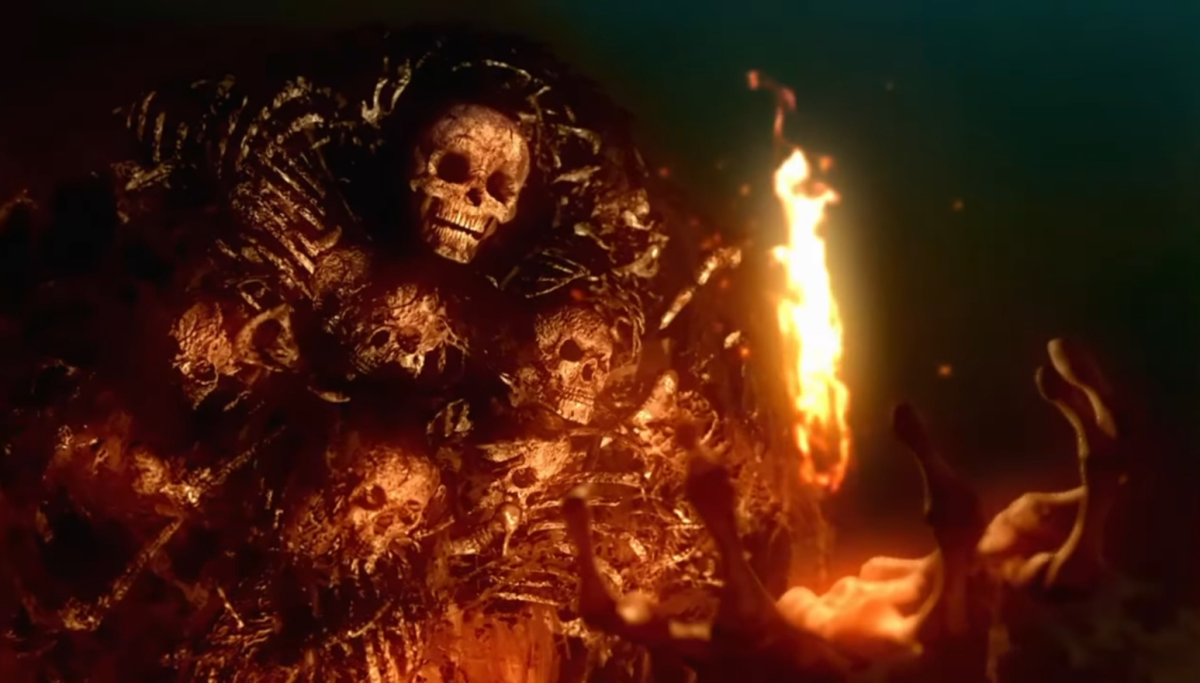
Well, I mean, Nito isn’t alive technically. . .
Hottest Man NOT Alive 2011 contender?
—The Witch of Izalith and her daughters of Chaos. They provided the magical firepower necessary to contend with the dragons. As you can imagine, they were instrumental in team fire’s victory.
—Gwyn, the Lord of Sunlight. He’s the one who brought the military; his legion of loyal knights made up the vast majority of the ground forces in the conflict.
—The furtive pick-me. Their role is unclear, but if the narrator is mentioning them in the same breath as Nito, the Witches, and Gwyn, they must’ve done something big.
—Last but not least, Seath the Scaleless. A crystal dragon who switched sides at a crucial moment, he ensured the downfall of his own people.
Through this unified front, the dragons were defeated. On the corpse of the dragons’ society, the kingdom of Lordran was established. This kingdom saw peace for a time, basking in the warmth of the fire that birthed them, but it wouldn’t last.
As the years went on, fire began to steadily dwindle. By the time Dark Souls takes place, it has been reduced to only scant embers.
With the fire petering out, not only have minor dragons have begun reappearing in Lordran, but the amount of Undead populating the kingdom has skyrocketed. Now, “Undead” in Dark Souls are basically normal people, but there is one important difference: Undead can go Hollow, losing their minds, becoming animalistic and dangerous.
The narrator explains that, in response to this uptick in Undead, the remaining government in Lordran decided to quarantine as many as possible in an asylum up in the north. The camera pans through this asylum, past many Hollow Undead, over to a jail cell at the end of the hall. In that cell, slouched against the wall, waiting for the end of the world, is our protagonist: the Chosen Undead.

In my playthrough, beloved Dark Souls character Taylor Swift.

She’s looking just a bit worse for wear, but, y’know? Something like the Eras Tour takes a lot out of a person, I can’t blame her. Her Anor Londo concert must’ve been as draining as it was stunning.
Before long, a not-yet-Hollow knight dumps a corpse into Taylor’s cell through its skylight.
. . . thanks, I guess?
This random corpse actually has the key to Taylor’s cell on it, as well as a crude sword. With the key, she’s able to escape her cell, and with the sword, she can protect herself well enough.
It’s smooth sailing for the next while—none of the enemies in the Undead Asylum are all that threatening—until Taylor Swift’s path is blocked by the hulking Asylum Demon, keeper of the asylum.

You can try to fight this thing, but, at least for the present moment, it’s best to slip out of sight through a door to the left.
After getting the out of there, Taylor crosses paths with that knight from before. Feeling in his stomach that he’s moments away from going Hollow, the knight quickly supplies Taylor Swift with an Estus Flask and entrusts her with his mission:
To ring the two Bells of Awakening back in Lordran—hidden away in the chapel of the Undead Parish, and at the bottom of the disgusting Blighttown, respectively—and lead the Undead to a brighter future.
She silently promises to do just that. What a queen <3
Returning to the Asylum Demon’s arena, Taylor Swift swiftly slays the beast. With the Asylum Demon gone, Taylor Swift . . . is free.
Stepping out of the prison for the first time in months, a giant crow appears and picks up our heroine. He must’ve been like “Wait is that Taylor Swift?? I gotta help her!” and so he does, and he takes Taylor Swift to the Firelink Shrine at the edge of Lordran.
This shrine is the central hub of Dark Souls, and it connects to most important areas in the game in one way or another. Stationed at a cliffside, the grass is dry, the scant trees are bare of leaves, and the actual shrine that the place is named after is in disrepair, covered in moss with no one to tend to it. There’re a couple of people hanging around, like the cynical and weary Crestfallen Warrior, a tongueless maiden trapped in a barred-off cave, and the Swiftie crow, ofc, but it feels . . . chokingly lonely.
Not to mention the wistful, yearning song playing over it all.
Firelink Shrine is a sad little place, really. But, through it all, it is safe. It’s one of the places in all of Dark Souls where you can let your guard down and relax.
But Taylor Swift doesn’t plan on sticking around too long. Without a moment to lose, she departs to complete the knight’s mission. Tylor Swift’s journey through Lordran will be fraught with danger, but if anyone can save the Undead, it’s her.
Dark Souls’ story is pretty good*, in my opinion.
But do note the asterisk. Because Dark Souls’ story . . . is not about the main character. The Chosen Undead is just a player vessel, and they have no real characterization to speak of. They may be the protagonist, but their actual place in the story is purely functional: they you.
No, the meat of Dark Souls’ story is actually tucked away in character dialogue and item descriptions.
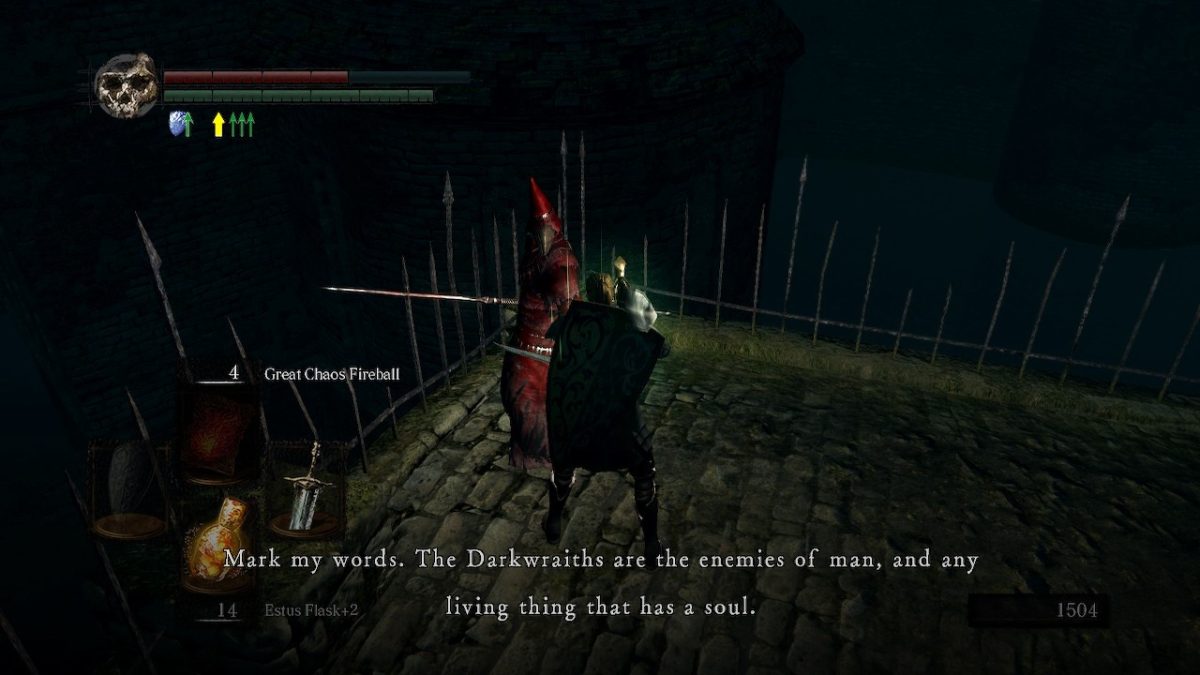
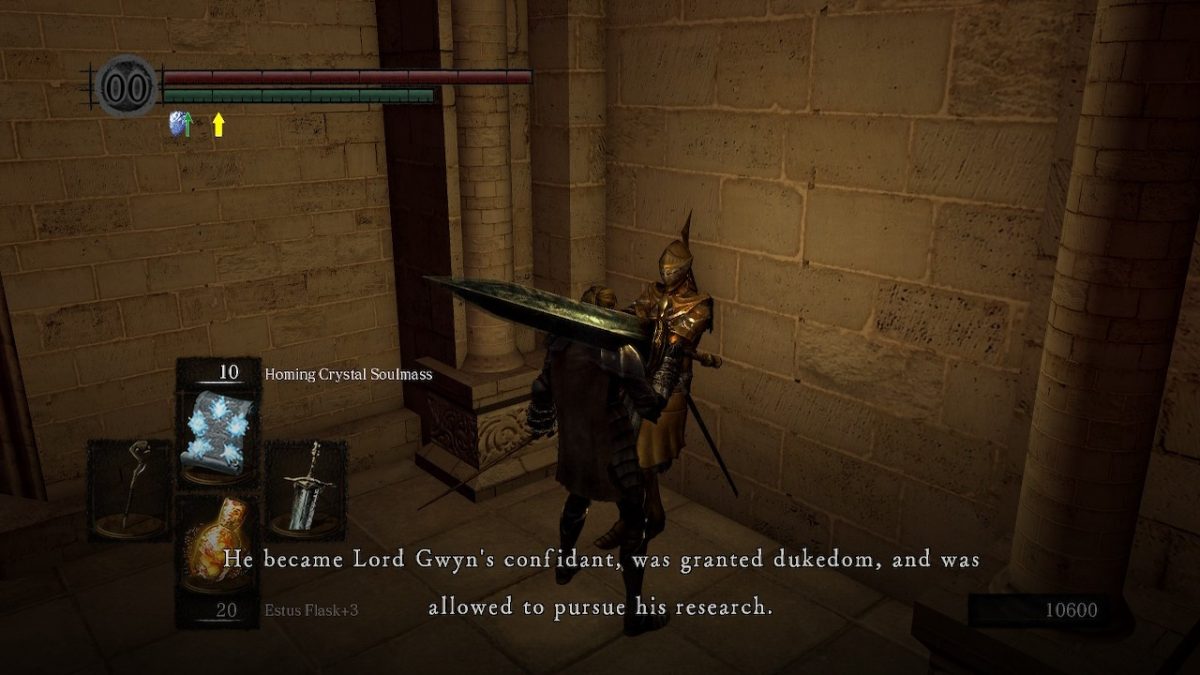


And it’s good! It makes Lordran feel like more adequately grounded. The history of this half-decayed carcass of a kingdom is delivered through scraps divorced from their contexts, speculations without definitive answers, and opinions that might be riddled with confirmation bias. It’s vague, but realistic for the situation. The knowledge of those crucial contexts and the records of the real facts that those opinions sprouted from . . . are lost. And the people who knew those answers? All of them have long since gone Hollow, or otherwise have vanished.
But, despite that, you get just enough of a glimpse into the progression of Lordran’s decline that . . . the already oppressive atmosphere feels all the more heavy.
But remember, that’s all background stuff. The actual moment-to-moment plot of Dark Souls is basically: Taylor Swift eventually kills every important character through unceasing determination and a fire halberd. Because, turns out, fire is very effective.
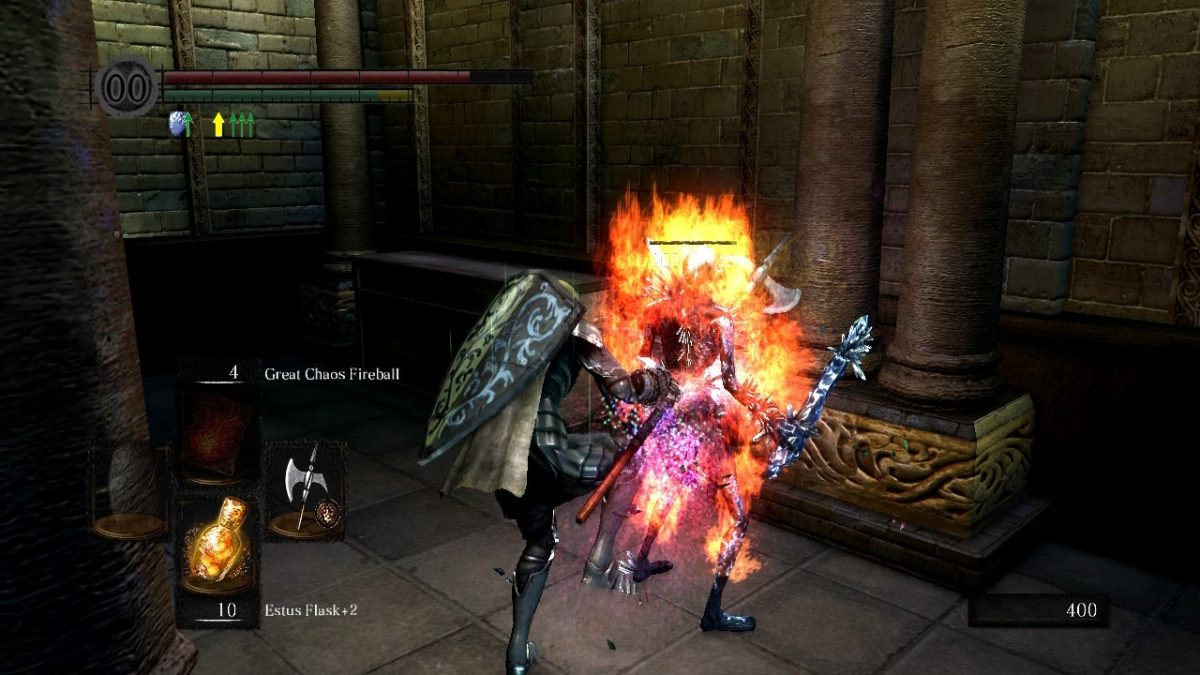
Also, because, like, the song’s called Picture to Burn, not Picture to Electrocute or Picture to Divine. Gotta stay consistent to slay consistent, y’know?
Whether or not this method of storytelling works is up to you. I think it’s great, and fits what Dark Souls is going for to a T, but I can absolutely empathize with those who find it frustrating in its vagueness.
Like, why make the tale of the main setting’s downfall—something that is very much relevant—so hard to follow? Why not explain why things are happening? Why deliberately hide it and give your player homework for the video game they already paid for?
Those complaints are very much valid, even if I enjoy the indirect way the story is told.
But something I think we can all agree upon with Dark Souls is that, the combat? ICONIC. MY WIG IS SNATCHED.

And so are my 26,000 souls thanks for that
Dark Souls is a third-person action JRPG, but it’s much different from the likes of, say, the Tales Of series. Those games, also published by Bandai Namco, focus on snappy, fast beat-em-up style combat with combos and flashy attacks. It’s very simple to pick up, but difficult to master, and it really makes you feel like an anime character.
Dark Souls. . . is not like that. It’s difficult to master, that much is true.
But it is far from easy to pick up.
You have a laundry list of stats, which determine your weapon roster and various other attributes of your character. You have to account for your equipment’s weights, so you have to be discerning with your loadout. A shield is basically required if you don’t want your insides to become your outsides. Your dodge-rolling is a highly skill-dependent maneuver. Healing is greatly limited. Poise is a thing and the game does not tell you about it. Upgrading your weapons is a thing too and it’s unnecessarily confusing.
And, most infamously, not only do you lose all of your souls—Dark Souls’ most important currency whenever you die, with ONE CHANCE to reclaim them, but slain enemies respawn when you rest at a bonfire—Dark Souls’ checkpoints.
Keep in mind that the enemies you fight in Dark Souls look like this


And you know she would. It’s a real Coughing Baby vs. Hydrogen Bomb-type matchup.
From as early as the Asylum Demon—the very first boss—Dark Souls shows that it expects a lot from you. There aren’t any gimmicks, no easy-peasy way to cheese it entirely. There’s an opportunity for a big strike at the start, but after that, it’s sink or swim.
So, how do you not drown?
Making sure you’re well-equipped is a good place to start!
The Chosen Undead has two hands, two hands which you can have hold weapons and other such equipment. Swords of all kinds, bows of increasing size, magical conduits like wands or talismans, whips, a spooky hand, big hammer, shields, etc. You might not be able to wield them to their paramount effectiveness depending on what stats you invest in, but you can always hold them.
With the exception of magical catalysts, every weapon has both a light attack and a heavy attack. Two sets, actually, depending on if you wield it in one hand only or clutch it with both.
Let’s use the fire halberd from earlier as an example.
Single-handing the fire halberd and light-attacking has Taylor Swift jab forward, before stumbling a bit. The heavy attack, meanwhile, is a delayed helicopter slash that hits enemies around her.
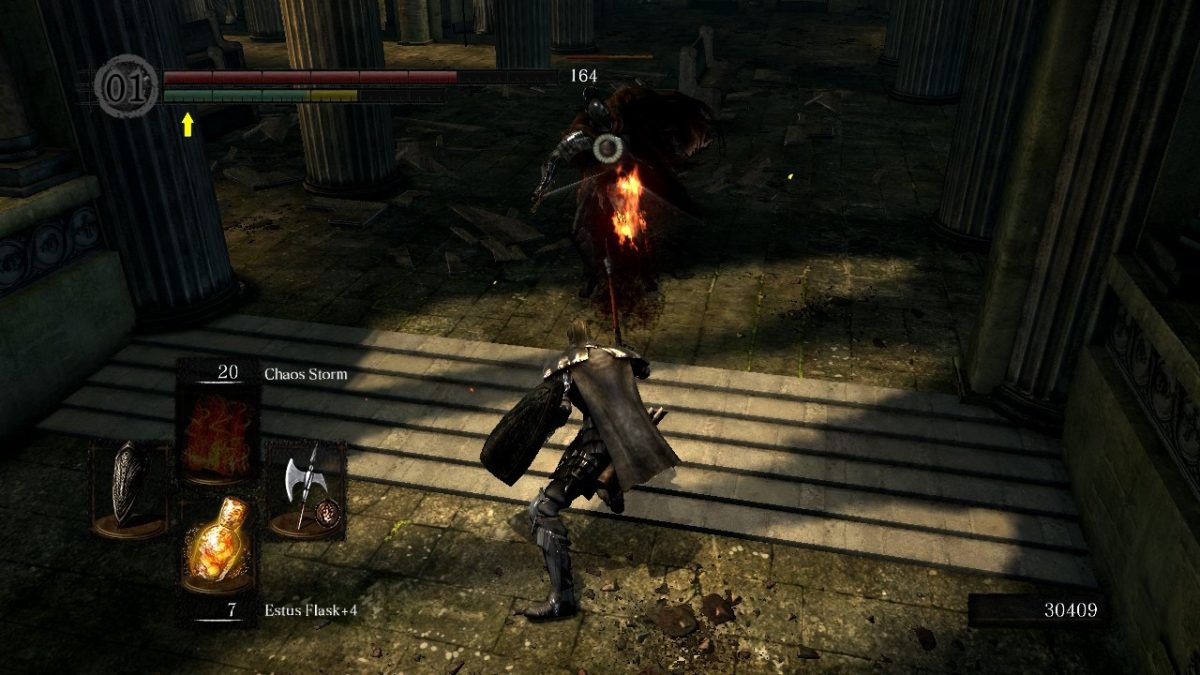
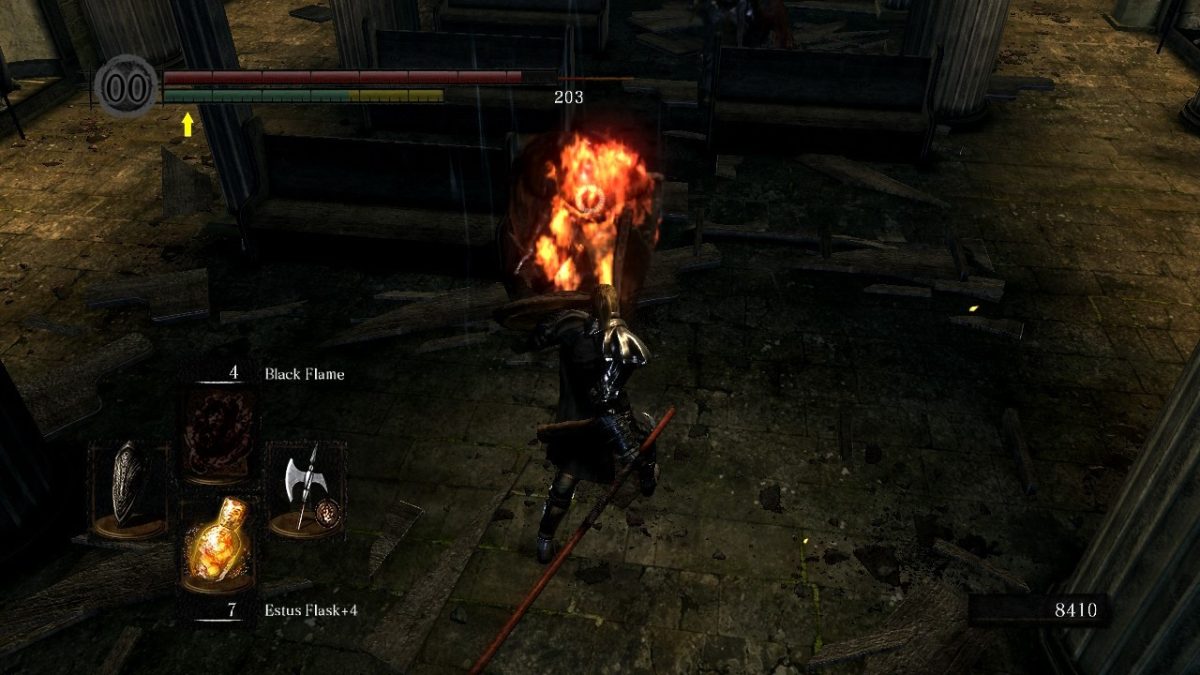
It works, don’t get me wrong, but it’s not the smoothest experience.
If smoothness is what you’re after, try two-handing.
Once again using the fire halberd as an example, there’s a lot less breathing room between light attack jabs, and the assault isn’t bookended with a stumble so you can mash the button and poke relentlessly. The heavy attack changes to be this two-part twirl, Taylor Swift spinning around, spinning around like she’s a lethal Beyblade.
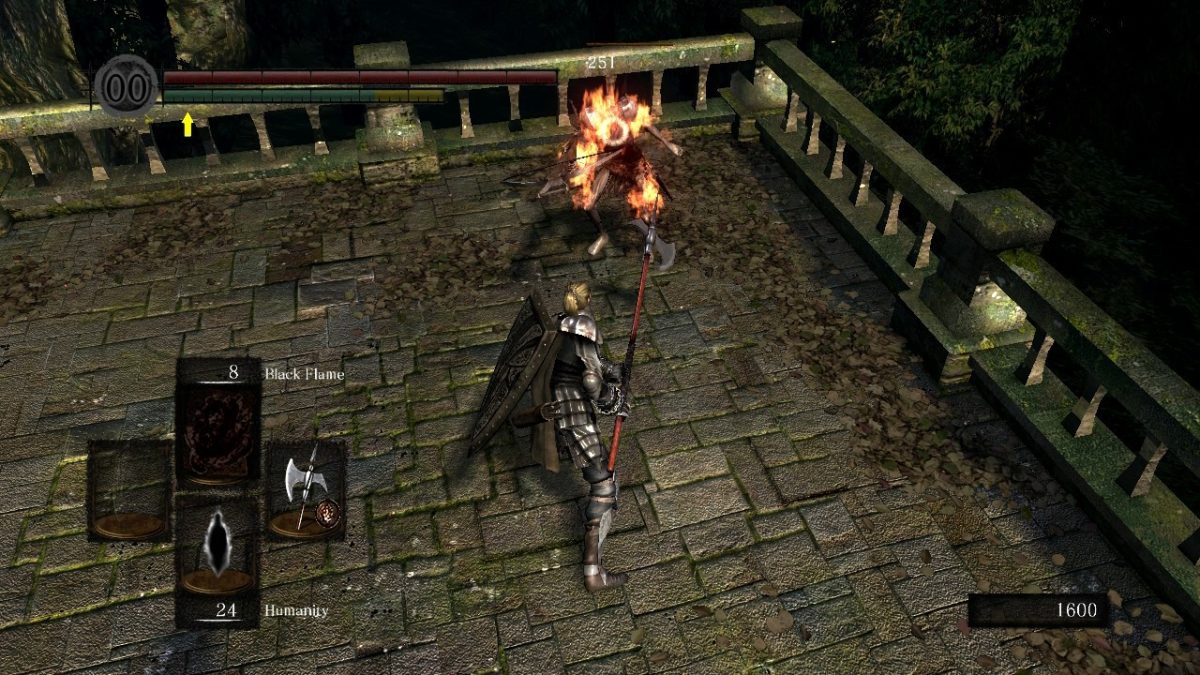
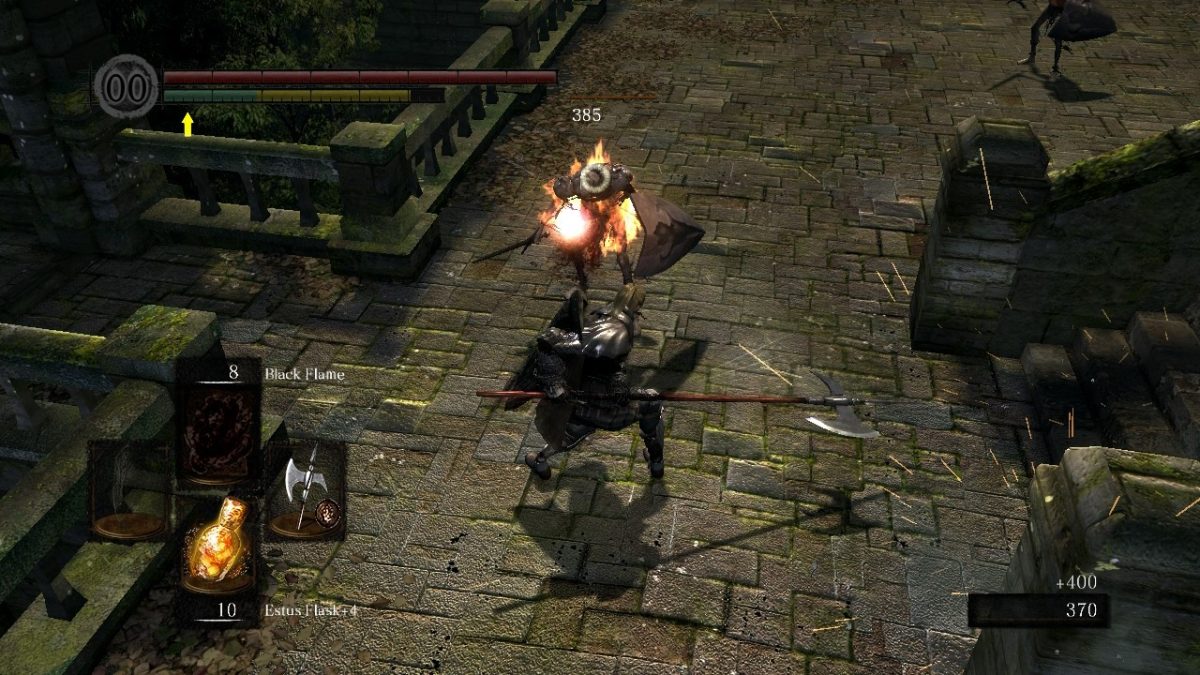
There is one big drawback that comes with two-handing, however. Whatever equipment you have in your offhand will be inaccessible. How big of a trade-off that is depends on what thing it is in your off hand, but if that thing happens to be a shield, you’ll miss out on a pretty powerful combo move: Parry + Riposte.
Throwing your shield out when an enemy is about to hit you will leave them recoiling. That’s the parry part. The recoiling doesn’t last long, but if you attack immediately, you can shove your weapon straight through the enemy and deal massive damage. That’s the riposte.
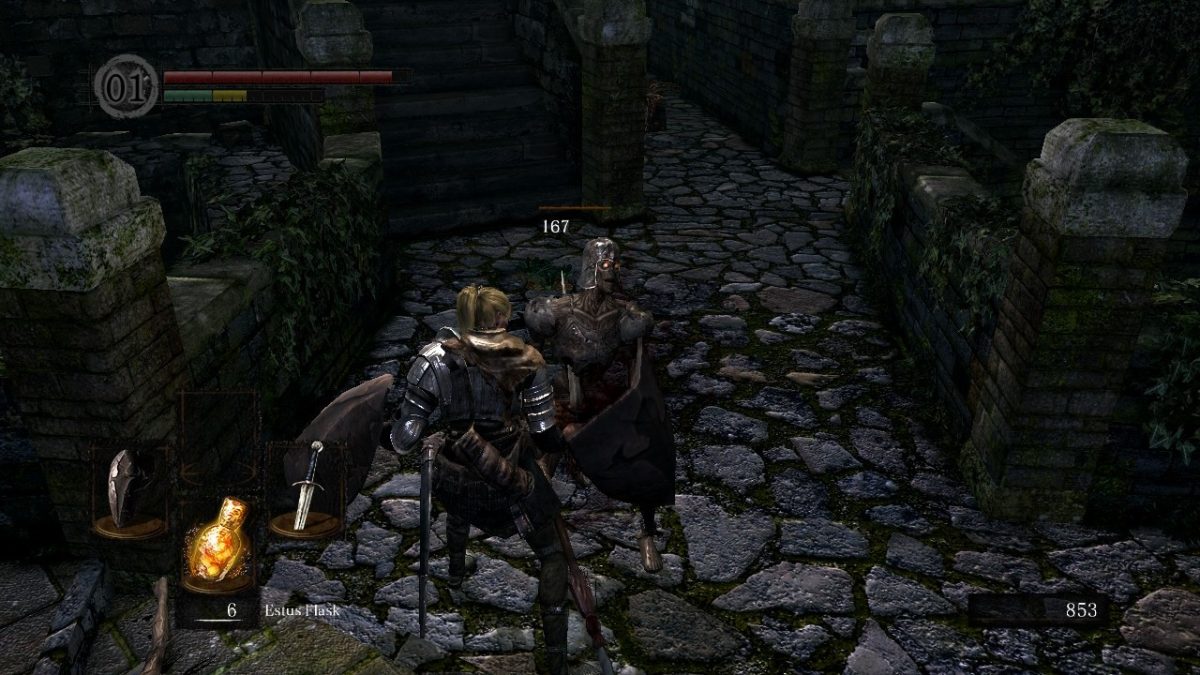
Parrying and a quick, spur of the moment riposte can easily kill most enemies, or at least leave them on their last legs. However, this combo attack is pretty difficult to pull off; you really have to study your enemy and learn the exact moment that you need to parry at. The damage is absolutely worthwhile, though, so one-handing does have that one benefit over two-handing.
Another move you can perform to give yourself a big edge is to slink behind an enemy and backstab them. It’s a little hard to pull off, since enemies will constantly turn to face you, but if you can get in position, the damage is about equal to a riposte. Which is to say, big numbers.
Choosing your weapon wisely is a huge part of overcoming Dark Souls‘ many obstacles. Enemies don’t pull any punches and can easily overwhelm you, even on their own, much more so if they’re in a pack. There’re plenty of viable options to choose from, though so don’t feel like you have to box yourself into using ONLY the best equipment!
It’s advised, yeah, but as long as you’re having fun with your weapon, even if you know you’re making the game harder for yourself, that’s all that matters.
Well, that’s not all that matters, actually. I lied sorry
While the first few weapons you come across in Lordran will be freebies, mid- and late-game ones will have the dreaded STAT REQUIREMENTS, gatekeeping who can use them.
Trying to use a weapon without meeting it where it’s at with stats will be in complete vain. Your character will flail about with the thing, struggling, barely doing any damage, and all attacks will bounce right off any enemy hit.
So, to avoid that, you’d need to raise your stats. And to do that, you need to level up.
Leveling up is a standard thing in RPGs. It’s a way to reward you for engaging in combat, rather than just running away from inconvenient enemy encounters. Dark Souls is no exception.
This is a long one, so strap in.
To level up, you first need to scrounge together some souls. You get souls either from consumable items or by defeating enemies, and you drop your wallet of them, shown in the bottom right, on death. And if you die again without recovering them, you lose those dropped souls forever. There’s no place for you to store souls safely away in either, so you’ll be carrying your whole bank account on you at all times.
Once you’ve accrued enough souls to level up, head to your nearest bonfire. These are checkpoints as I stated before, but they serve more purposes than just that. As the fog effect despawns enemies and refills your Estus Flasks, the bonfire shoves a menu in your face. That will look like some variation of this:
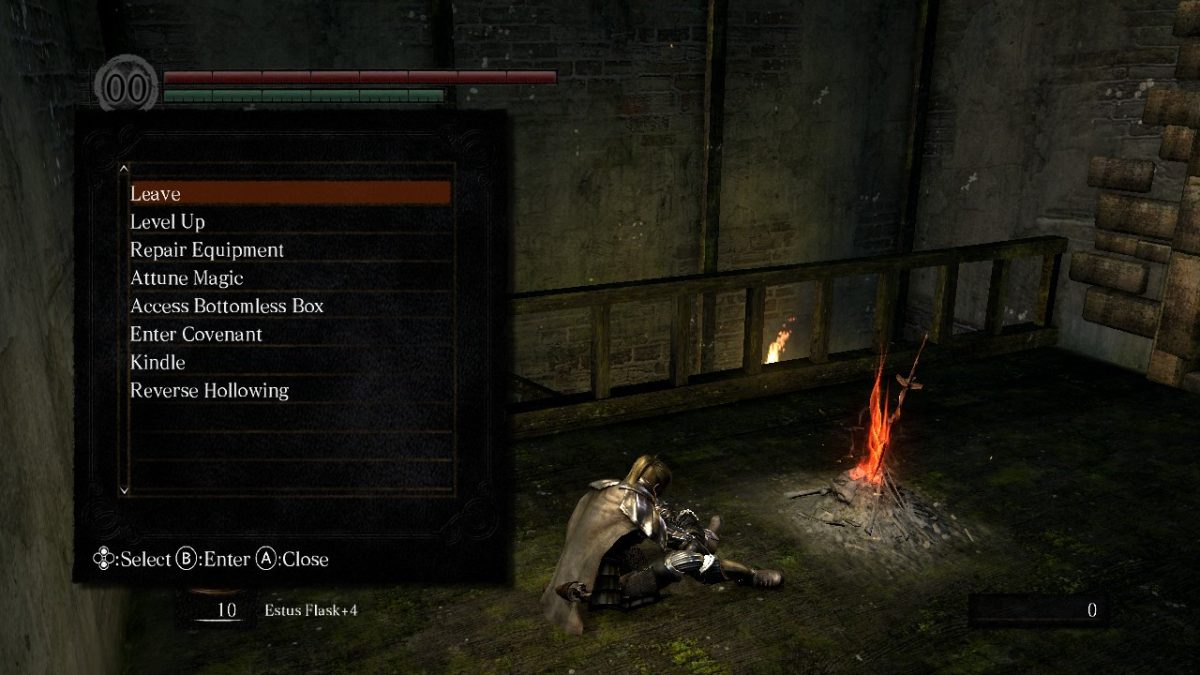
From there, you can choose to level up, in the aptly-named “Level Up” tab.
Leveling up has you invest the required souls to boost one of eight stats: Vitality, Attunement, Endurance, Strength, Dexterity, Resistance, Intelligence, or Faith. These stats are incredibly important, influencing core aspects of your character and build.
Some are very simple. Vitality correlates to your max HP, Attunement increases your magic slots, and Resistance shores up your resistance to some status effects. Vitality is good for basically all builds, Attunement is practically a necessity for magic, and Resistance is bad!
Endurance is marginally more multifaceted. Higher Endurance does two things: it increases your Stamina and your maximum equip load.
Stamina, shown as the green bar in the upper left corner of the screen, is, point-blank, one of the most important things in Dark Souls. Basically every action, from attacking and guarding to dodging and running, requires an entry fee from your Stamina. The yellow chunk is what that entry fee is.
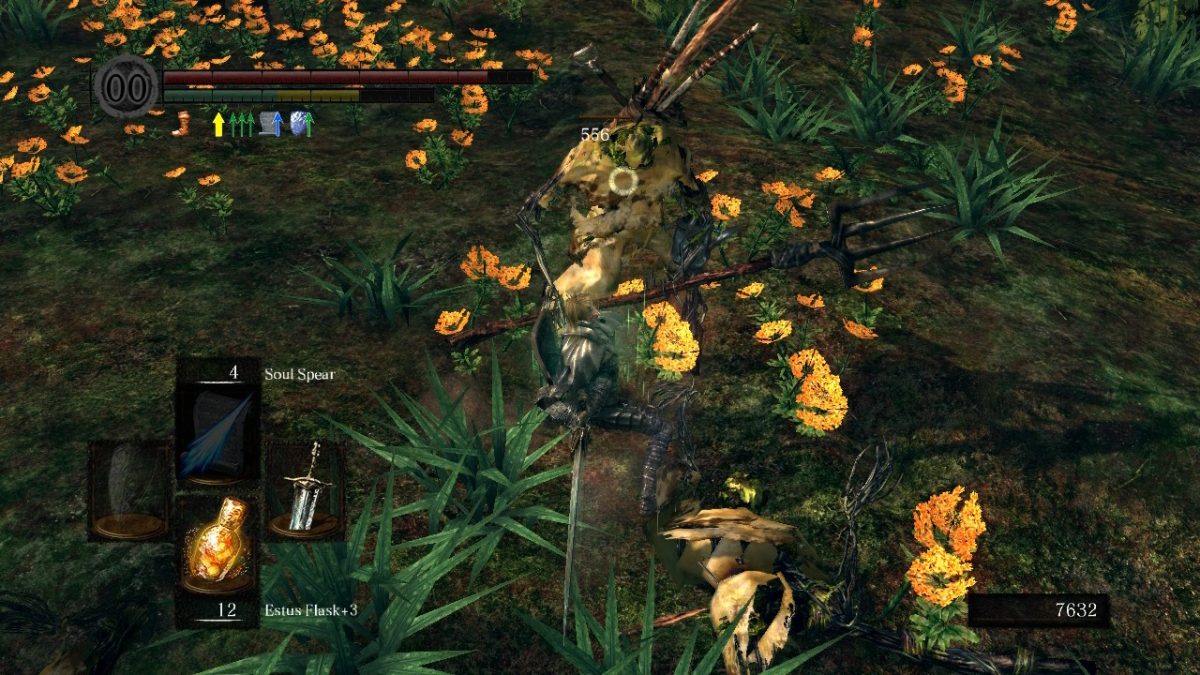
Thankfully, Stamina will recover over time, so it’s not a permanent loss or anything.
Stamina isn’t really something that you pay attention to in normal gameplay, but it becomes very important in boss fights. John Undead in the Undead Burg isn’t going to put up too much of a fight, so the Stamina used up by attacking him isn’t gonna be that big of a problem. However, beefier enemies like the Capra Demon, Ornstein and Smough, or the Black Dragon Kalameet, that really put your feet to the fire, are not the case. Running out of Stamina against them can very easily kill you.
So, you’d think that careful micro-management of Stamina is the solution, right?
Yes-ish.
It’s advised, certainly, but . . . that’s not necessarily something you’re always in the headspace to do. I don’t mean that as a scathing indictment of anyone’s gaming prowess or anything, simply that it’s a human reaction to panic when the boss is doing a movement that they’ve never done before oh god what are they doing why are they doing that what do I do what do I do??????
And when you panic, the natural response is to start mashing buttons in a blind haze. You dodge so frantically that you forget about how much Stamina you’re using up, making you vulnerable. It’s not something you’re completely unable to recover from, but there’s quite a big margin of error there.
Thus, the benefit of investing in Endurance. Higher Endurance = higher Stamina, so it never hurts to throw a level or two its way.
If you’re an experienced player, human error will obviously be less of an issue. For newcomers, my only advice is to not let anger get to you. It may be a skill issue, but you won’t improve by violently smashing your controller to bits.
Leaving Stamina behind for a moment, Endurance also increases your character’s max equip load.
With the exception of equippable magic rings, every piece of equipment in Dark Souls has a weight! Every helmet, every sword, every magical scepter, every shield, every everything. Every everything that’s not a ring.
You can see what the individual thing’s weight is by selecting it in your inventory. It’s at the very bottom of the right column.

Your total, cumulative weight across all of your equipments is then compared to your max equip load to determine your movement speed. The exact calculations are based on 0%-25%, 25%-50%, etc. increments, with higher percentages making your character heavier and heavier, directly impacting how fast or slow their movement is.
For most builds, staying under 25% is advised. Keeping nimble is literally never a bad thing in Dark Souls, so you’ll want to girl math out what to equip and what to not to make the most out of what you have and skirt just beneath the thresholds.
Increasing heft will also impact your character’s dodging ability, forcing you to be even more precise with it.
^Keep a pin in this, we will be circling back to it.
Our last four stats—Strength, Dexterity, Intelligence, and Faith—circle back to weapons. These are the stats of the dreaded stat requirements fame, and they also impact how much damage you do through scaling.
Every weapon demands a floor from one or more of these four stats. As a rule of thumb, uncomplicated weapons like swords want Strength, more unwieldy weapons require some Dexterity, instruments of secular sorceries are an exclusive club for the biggest of brains only, and Talismans insist on someone particularly pious. Some weapons, mainly weapons refined from boss souls, dip into multiple stats, though, so be aware.
Also be aware that Intelligence and Faith requirements extend to those weapon types’ corresponding spell families—Sorceries and Miracles—too.
You can check what the weapon demands by selecting it in your inventory, under “ReqParam.” It’s a little bit above weight.
Early weapons will have such low barriers to entry that basically anyone can use them, but that doesn’t hold true for long. The Pyromancy Flame—the singular weapon for the Pyromancy family of spells—has no stat stipulations, though, so you can factor that into even the least magically-inclined builds. Who needs smart or God for fire? Not Taylor Swift!
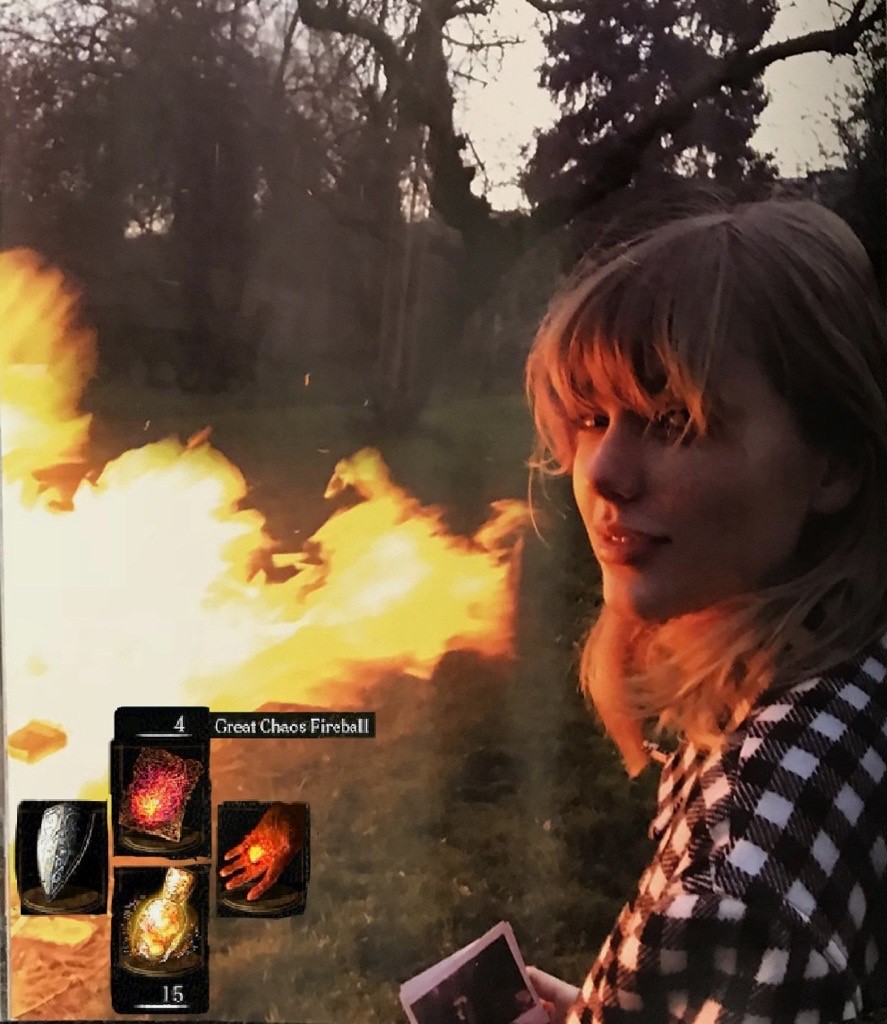
It seems that it isn’t gonna be forever, that that it’s gonna go down in flames. Alas 🙁
Stats do have another purpose, besides fulfilling weapons’ use prerequisites—they inform how much extra damage is dealt through a system called scaling.
Scroll back up to that image See the letters under the words “ParamBonus”? That’s that weapon’s scaling capacity with that stat.
To simplify, the better the letter, the higher the bonus damage. It goes from E at the bottom, through D, C, B, and A, all the way up to S. E’s and D’s damage are pretty negligible, but A’s and S’s are really not to be scoffed at!
It’s all very americangradingsystem-core.
You could even say that it’s . . . So High School.
To glean the full benefits of scaling, you have to keep investing in the stats, beyond what’s strictly necessary. It adds a bit more conflict in your heart and soul(s) as to what you’ll spend your precious souls on, rather than just defaulting to Endurance of Vitality once your sword can sword good. It’s not the most important thing in the world, but I appreciate its presence.
But here’s the kicker to all of this: Leveling up in Dark Souls does not cost a flat, unchanging rate. As you continue to level up, you’ll be charged more and more souls. It gets to the point, late-game, where you’ll be dropping ~60,000 or more souls, which, suffice to say, is a TON.
To add insult to injury, there’s no way to reset your level and reallocate your stats. Later Soulslikes give you that option, but no such thing exists in the original Dark Souls. It’s genuinely one of the worst parts of the game in my opinion. It’s not even a thing in the 2018 remaster, which is stupid!
So, once you pour souls into a stat, it’s locked in forever.
Therefore, you need to be smart and focused with your investments. This is true in all Soulslikes, but with the arbitrary no-resetting THANKS MIYAZAKI, it’s even more true-er here. If you want to beat Dark Souls, you really can’t put your soul fingers into too many stat pies. You’ll stretch yourself way too thin, and you’ll be worse off for it.
I’d say pick an archetype and stick to it. A Strength/Dexterity or Intelligence/Attunement build is pretty approachable, so go with one of those for a first playthrough. Faith/Attunement, pure Dexterity, or any of the other cross-contamination stat builds absolutely have their place and are valid playstyles, but I don’t suggest them for a first timer.
Up until this point, I’ve been primarily discussing offensive techniques. They’re how you fell bosses and progress the game—pretty important, to say the very absolute least—but in taking on Lordran’s league of lincreasingly limposing lfoes, there’ll come times when you’ll need to implement defensive tactics.
Namely, guarding with a shield or dodge-rolling.
Guarding is very simple. Once you have a shield in hand, you can hold it in front of you to block incoming attacks. With the shield up, any damage you’d take normally is redirected to your Stamina instead of your HP.
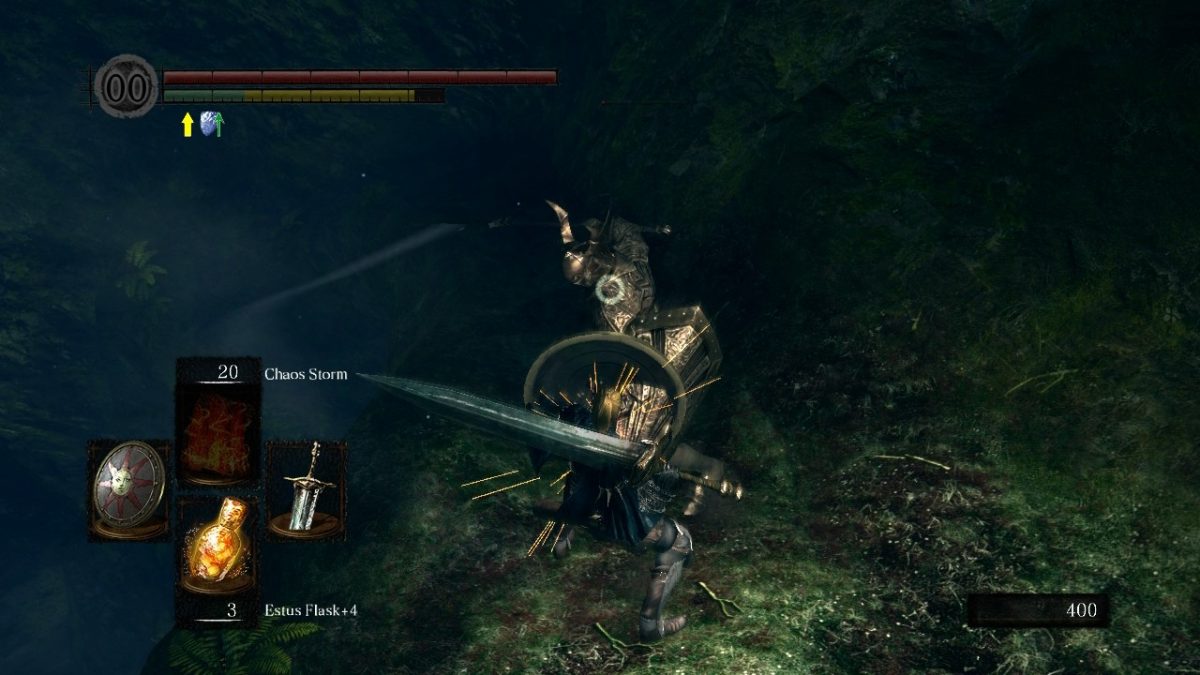
Do be aware that if your Stamina is completely depleted while holding the guard, your character will end up thrown off-balance for about half a second. That window can easily be fatal, so block in moderation unless you have the Stamina to support it.
Though, some attacks (usually magical ones) can hit you through the shield, so it’s not a perfect solution.
Enter Dark Souls’ other defensive option: dodge-rolling.
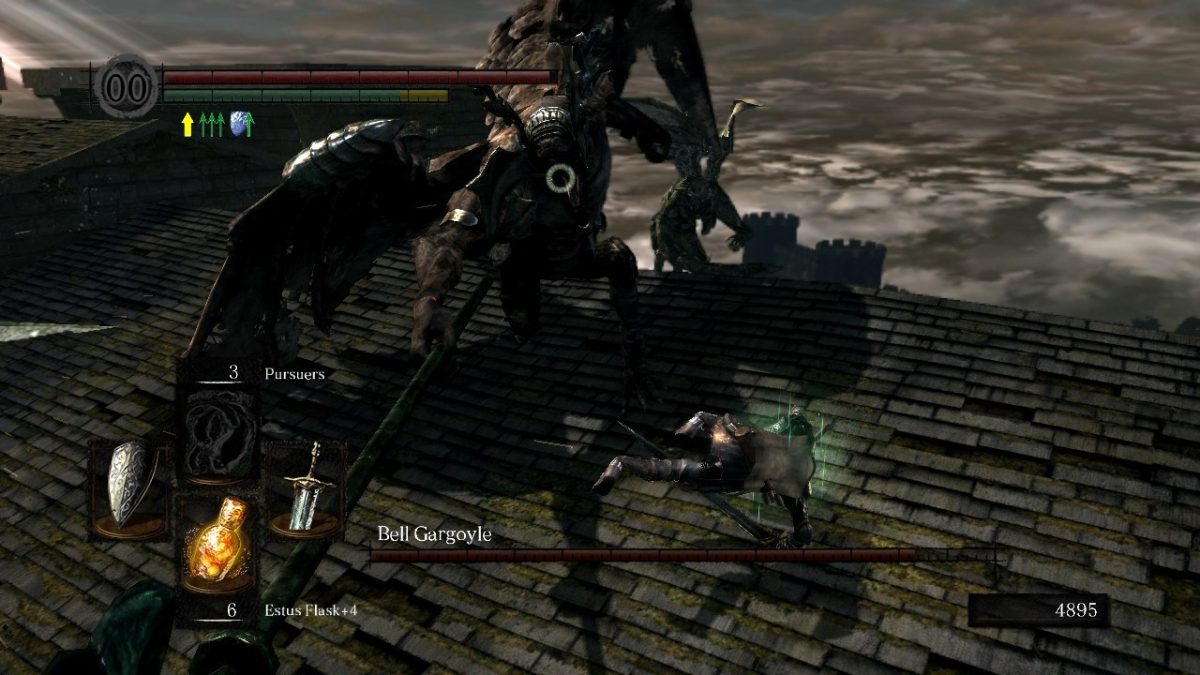
If you don’t know anything about Dark Souls, and have read this far down, let me be frank: this is the big one.
Dodge-rolling is what it sounds like. Your character dodges into whatever direction your joystick is pointing, and it’s done via a roll. And, as you can expect, doing so costs some Stamina. Dodge-rolling can shoot you reasonably out of danger, so it’s a useful maneuver in a lot of scenarios!
There’s obviously the Stamina fee to consider, but that doesn’t fully take away from the move’s value.
But . . . it’s not the distance that makes dodge-rolling so good and so valuable. There’s something I’ve not mentioned yet. Something that, while asking a lot of you to fully utilize, elevates dodge-rolling to being the most potent tool at your disposal.
When you dodge-roll, there are a few frames where you ‘re completely invincible.
You will not take any damage at all, not from any source.
To get us all on the same page, let me explain. Video games have frames, much like a movie. They’re a series of still images that show you what’s happening in the game that you’re playing. Most games in the modern era run at either 30 or 60 frames per second. While some people do, I don’t personally have a preference as long as the fps is consistent—which is based on how much is on-screen at a given time and how well-optimized the game itself is.
Dark Souls isn’t special for having frames. But what is special is how Dark Souls lets you use frames to your advantage.
With a single well-timed dodge-roll, you can exploit those invincibility frames to entirely nullify the strongest of attacks. Isn’t that insane???
I mean, a little bit, yeah! But dodge-rolling BY ITSELF does not make Dark Souls an easy game. You really have to NAIL the timing. Anything less, and those invincibility frames will not save you. You have to pay exceptional attention to your foe’s movements and really learn them if you want to get the most use out of your dodge-roll.
And I’m just going to tell you: you will want to get the most out of it.
To throw an extra wrench into this, the amount of invincibility frames you are directly connected to your heft according to your max equip load. I told you to keep a pin in that. Did you? Well, either way, this gives even more importance to girl mathing to keep your equip load low, since the heavier you are, the harder it gets to time your dodge-rolls correctly.
Guarding and dodge-rolling are two sides of the same coin. One is simple and reliable but has definite consequences for relying on it too much. The other, meanwhile, is risky, becomes trickier to pull off based on your gear, and will land you in hot water if you’re not precise. Both are powerful tools for preserving your life and souls.
But say you do end up getting hit and take some damage. Hypothetically. For the sake of argument, even.
Well, remember those Estus Flasks that that one dying knight gave to Taylor Swift at the start of the game? If you’re not doing a Faith build, those flasks are your one and only source of healing.

Estus Flasks have a limited number of uses, starting at a measly 5. You can increase your max count to 10 by kindling at a bonfire—and to 15 and 20 if you get your hands on a certain item—but that’s it. Once you’ve drinked ‘em all down, you’re out until you get back into rekindled flames to another bonfire. You have to use them sparingly and smartly.
You can boost the amount of health you recover from your Estuses by talking to a Fire Keeper (some bonfires have them nearby) and providing them with a Fire Keeper Soul. Bing-bam-boom, your Bug Juice is improved!
But, as bosses get stronger and have more health, their fights will last longer. And the longer they last, the more damage you’re likely to take, so you still need to remain frugal with your Estus usage.
Not to mention that enemies of all kinds will take advantage of your vulnerability when healing. Their AI recognizes that you’re doing it and takes the opportunity to strike. Even your healing has to be strategically timed.
You might get into a more perilous situation later, so maybe holding off on it is the best decision? You decide! You have to analyze the situation and act accordingly.
That’s also just what Dark Souls expects you to do in general. It’s a game about on-the-fly assessments of your circumstances and adapting to survive. Do you risk attacking, do you try to dodge, do you try guarding, or do you heal?
Think about it like Taylor Swift’s eras. While she started as a country singer, that image would become stale as the years went by—so she pivoted! She analyzed the situation and acted accordingly, refreshing her image. And Taylor Swift’d continue to pivot and refresh whenever things got dire, like, say, when she got into drama with low-resolution Centipede Demon back in 2011.
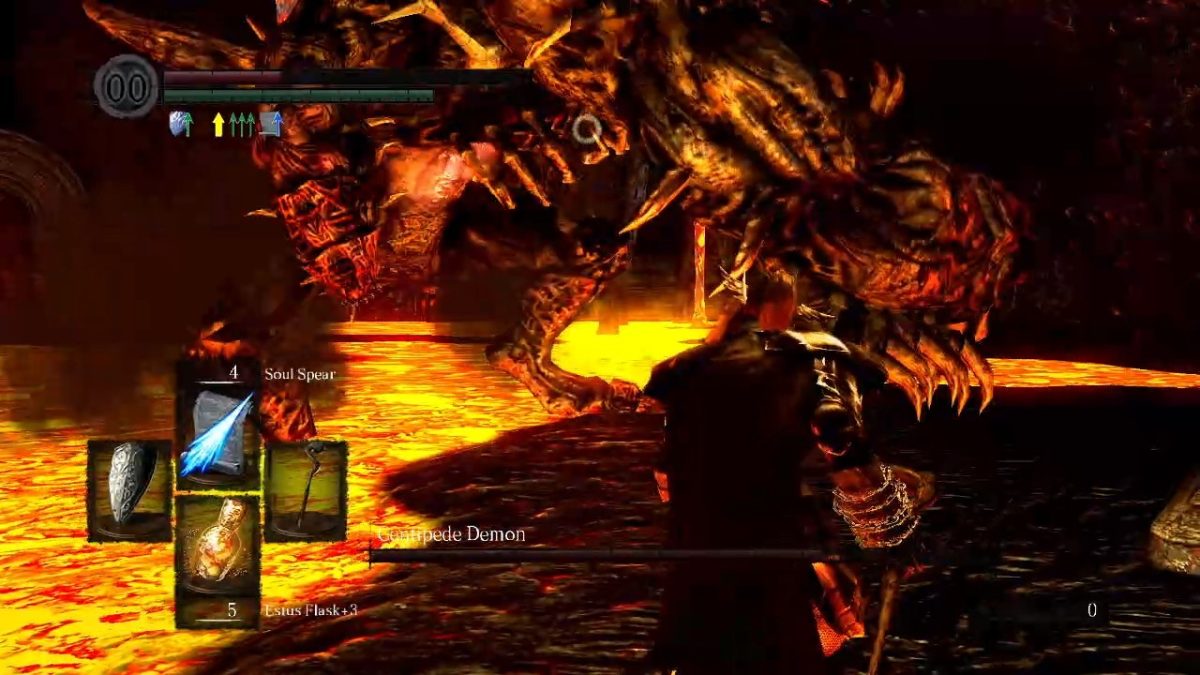
However, there’s only so much that live laugh love can do for you when not insignificant gameplay mechanics are either a) not explained well or b) not explained at all.
Soooo remember when I praised Dark Souls‘ vague method of storytelling? How it felt realistic?
There is no such praise when it comes to upgrading your equipment and poise.
As you explore Lordran, you’ll come across four blacksmiths: Andre of Astora, Rickert of Vinheim, Vamos (no title), and the Giant Blacksmith (no title either, but he has an adjective at least). These helpful folk provide services to empower your weapons. You can request this by talking to the blacksmith and navigating to the “Reinforce” tab.
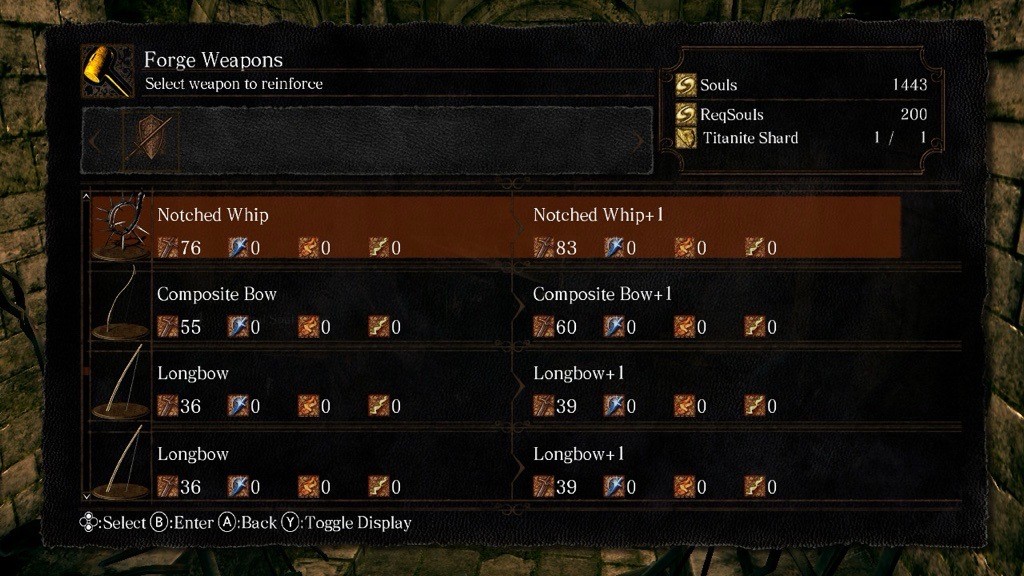
These damage increasements are big jumps, so definitely prioritize upgrading your weapons. Though, keep in mind that not every blacksmith can reinforce every weapon—for stuff like the Pyromancy Flame, you’ll need to track down some specialty merchants.
But, alas, nothing’s free in capitalism, least of all skilled labor.
All blacksmiths will demand an upfront paycheck of souls, plus whatever materials are necessary, before they even think about processing your request. That’s pretty understandable, and par for the course.
However, after upgrading a weapon to +5, you’ll find that the weapon . . . vanishes from the regular upgrade menu.
Where did it go?
It’s taken a brief vacation to the “Modify Equipment” tab.
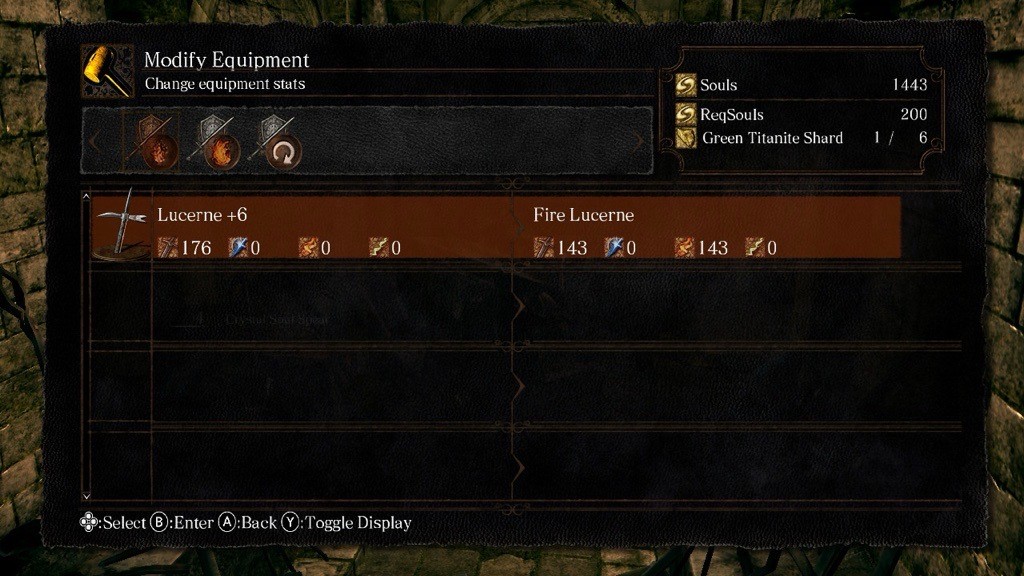
Switching over there allows you to continue upgrading your weapon to +6 and +7, imbue the thing with magic like Chaos or Lightning, or reforge it into something completely new with a boss soul from one of the bigger bosses. Once one of those things is done, the weapon will return to the “Reinforce” tab.
Be aware that magically-imbuing weapons will reset them to level +0, and you’ll have to start from scratch on a new upgrade path. The magic element isn’t added on to the weapon, which is what I thought it was at first, despite the number on the result weapon being lower.
Regardless, not all of these magical imbuements do the same thing, so think twice and do research before you spontaneously Modify that broadsword of yours to be Enchanted. I know the night is sparklin’, I know you’re wonderstruck, but you shouldn’t impulse buy!!!
The actual options the “Modify Equipment” tab hands you are dependent on if the blacksmith has the right Ember for the job. Like, Andre can’t make a weapon Divine if he doesn’t have the Divine Ember.
Embers are found throughout Lordran as a part of regular game progression, so you’ll have to play for a little while before you can make your beloved Painting Guardian’s Sword into a killing machine. You can’t just boost it up to +10/+15 right out the gate.
Thankfully, the Embers’ item descriptions in your inventory subtly point you in the direction of the blacksmith they’re for, so you won’t be too lost with that part.
Transmuting a weapon with a boss soul, though it’s done in the same menu, is a different process. Before anything, only certain types of weapons can be reforged into certain boss soul weapons. Like, only shields can be made into the Crystal Ring Shield with the Moonlight Butterfly’s soul. Once you have the correct weapon you plan to use, you need to find a blacksmith willing to do the job. Some blacksmiths will think the vibes of your idea are rancid, and will refuse to do it, so you gotta find the one that will. After you have found a guy that’s up for it and he does the thing, the base weapon will disappear, forever changed.
When I lay all of it out like that, upgrading weapons seems pretty simple, right? It’s a little convoluted with the menu-swapping halfway through, but it’s not that bad. And yeah, once you know how it works, it’s not too difficult.
Issue is that there’s really no tutorialization for this mechanic. Sure, you can reasonably intuit some stuff based on video game knowledge or the basic fact that these people are blacksmiths, but it’s also very easy to mess up.
Like, specifically when you upgrade your weapon to +5 but don’t have the right Ember for further non-magical boosting, you might mistakenly think that “Oh, I can’t go any further with my weapon in its basic state, so I have to give it a magic property! Like fire!” only to find out that magical imbuing doesn’t carry over the prior upgrades and starts you over on a new upgrade track. It’ll be fine in the long run, yeah, but in the moment you just feel cheated and deflated because the FIRE UPGRADE PATH WAS THE ONLY ONE AVAILABLE SO I THOUGHT THAT WAS WHAT I HAD TO DO.
. . . That’s right. The fire halberd was an accidental child whom I only grew to love after the fact. This anecdote is sourced from personal experience. The fire halberd lore is CRAZY.
Or, with the boss soul weapons! I can understand wanting to make them trickier to obtain, since they’re extra cool instruments based on the powerful enemies you’ve felled! I get that, but . . . there’s no in-game indication about which blacksmiths can or can’t do the transformation. And it’s not connected to the Embers either, so you basically have to run around the entirety of Lordran to run it by each of them until you strike gold and can finally forge the cool thing you want.
Or you could go to the wiki you could do that instead
I just think an in-game manual of some kind explaining this system more candidly would go a long way. Like, have Andre explain it step by step or something. I know it’s part of the whole git gud, learn from trial-and-error thing that Dark Souls‘ gameplay is famous for, but I really don’t think that being coy about upgrading your weapons enhances the experience in any way.
Especially as enemies become aggressively stronger and more complicated—you need to be able to match their growing firepower. It would just be nice if it was less . . . like it is.
Blacksmiths can also upgrade your armor, but that’s, thankfully, way more straightforward. No Embers or ascension required, just souls and materials. It’s a breath of fresh air, honestly,
But flashback to five sentences ago. Speaking of things that don’t enhance the experience in any way that blacksmiths can help you with: Durability. I’m obligated to talk about this and I’m going to make it brief because I don’t care.
As you attack and/or are attacked your equipment is gradually worn down until they’re not really effective anymore and to restore them you have to repair them using souls and you can get a little add-on to do it on the go and once you get that this entire mechanic becomes even more superfluous than it already was. It’s another thing to dump your souls into and that’s it and it’s boring. The only weapons that actually use durability in any interesting way are the dragon weapons—a rare subsection of weapons which have uniquely powerful two-handed heavy attacks that do spine-shattering damage at the cost of a good chunk of durability which is a pretty cool tradeoff genuinely but literally that’s it these are the only cases where durability is used creatively and there are only like seven dragon weapons so it’s a moot point.
But you know what “point” almost doesn’t really sound like?
Poise.
Poise, besides being a cheeky reference to hit 2023 video game Limbus Company, is quite possibly the biggest victim of Dark Souls’ iconic vagueness in gameplay. It’s a stat that the game never completely explains, not even in the item descriptions of things like the Wolf Ring, which directly affect your Poise.
So, it’s left to me.
Remember how I said a while ago that using your shield too much will lead to you getting thrown off-balance? Well, that’s not just a niche mechanic to punish you for using a shield as a crutch: you will also end up balance-off-thrown if you take one too many hits in quick succession. Your Poise determines the amount of those hits you can shake (it) off before your stance is broken wholly.
If you can evade being hit for 5 seconds, your Poise will reset to full—a strategic retreat can be the difference between making progress and getting skwered. A pretty important thing to know, especially with how fast and strong some of the later enemies are.
All the more frustrating that Dark Souls never tells you WHAT IT IS!
You can’t directly raise your Poise like you can the other stats, through selecting a corresponding stat when leveling up. Instead, your Poise is determined by what armor you wear. Armor that is visibly thick and protective, like the Stone and Havel’s sets, will grant higher Poise.
Armor made from hard rock or layered, cold steel, naturally, would be harder to cut through than raggedy robes or a leather tunic, right? That’s the mentality Poise operates under.
As such, most of the best Poise armors are really heavy, unfortunately, so keep that in mind with max equip load girl math min-maxing.
Know that enemies and bosses have Poise, too! It’s not just Taylor Swift. She’s not unique.
Early enemies in the Undead Berg and Undead Parish don’t have a lot of Poise, but that obviously doesn’t hold true for the rest of the game. Bosses kinda always have a lot of Poise, so you can’t break their stance easily.
If you happen to get through an enemy’s Poise as they’re getting ready to attack you, you can interrupt that attack mid-animation, before it connects. It’s a nice thing to have, but it’s not really something you can make use of unless you’re specifically trying to do it. Like hitting the enemy so much, so fast, that their Poise breaks constantly and they can’t even get a single attack in.
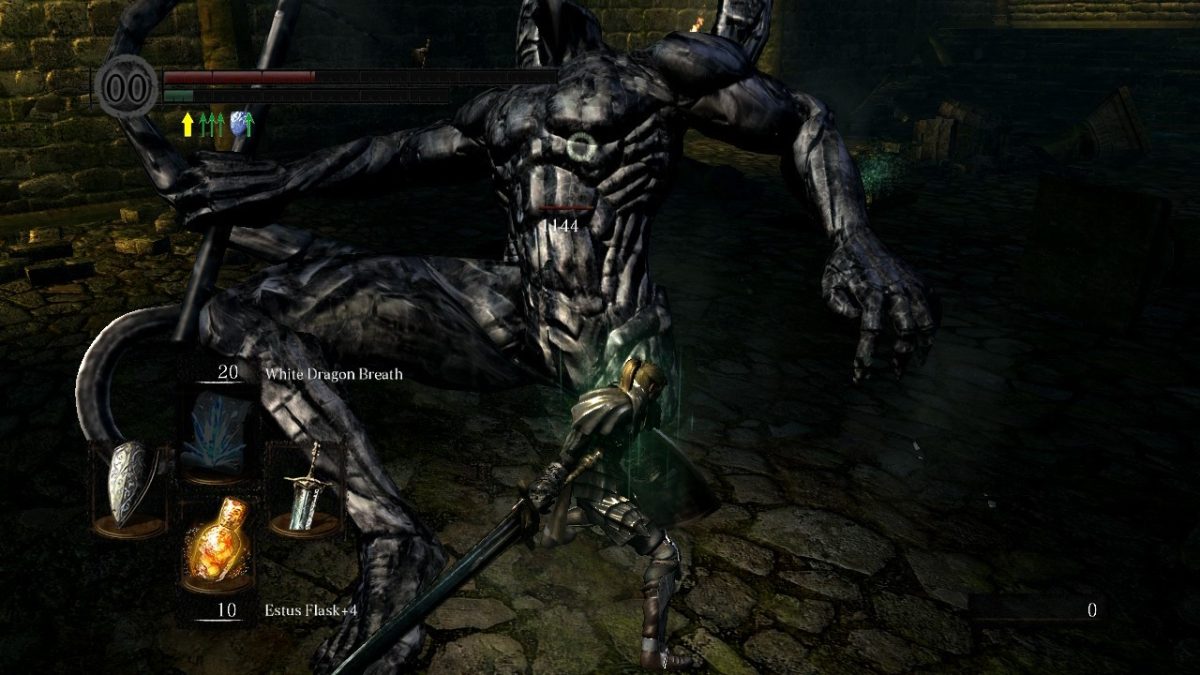
Unlike with blacksmiths and the reinforce-modify thing, there’s literally no way for you to naturally intuit anything about how Poise works. You know that something’s happening when the enemy jerks back after you hit them a few times, but you don’t know why. It just . . . happens, for no explicit reason.
But then again, that’s sorta what Dark Souls is going for. It throws you to the wolves from the very start—tutorialization is limited to the barest of essentials, and it’s your job to figure out how to win from context clues and analyzing patterns.
If something is happening repeatedly, then there’s a reason for it, right?
Yeah, I guess, but . . . how are you supposed to identify that it’s Poise specifically? It’s not the hardest connection to make, but it’s certainly not clear.
Dark Souls’ combat, all in all, is incredibly punishing, layered, and pushes adaptability as your most important asset, and it’s uncompromising in that.
Some people, understandably, find that uncompromising nature frustrating and even cruel—especially with how little explanation certain gameplay mechanics receive—but it’s because of that frustration and cruelty that overcoming strong opponents feels so deeply gratifying.
Dark Souls’ intentionally leaves you in the dark with some parts of its combat, seemingly, just for the sake of watching you struggle.
The gall it takes to commit to that when the player has the option to just turn the game off is . . . it takes a certain confidence to do that. And I think that confidence is well-earned—overcoming hard bosses is superbly satisfying in a way that’s addictive.
There are more things to talk about with Dark Souls. Combat is, like, the main thing obviously, but there is more.
So, it’s time for✨ Arguably Miscellaneous Things in Dark Souls! ✨
There’re plenty of groups working within Lordran to their own ends, and you can take an oath to join them. These are referred to as Covenants.
Once you’re a part of a Covenant, you can earn exclusive rewards by increasing your standing in the eyes of the Covenant leader. To do this, you need to offer the Covenant leader specific items, like Golden Coins, Souvenirs of Reprisal, etc., or eliminating other players in player vs. player combat.
Because, yes, as it turns out, Dark Souls has online play! I didn’t know this going in don’t bully me 🙁
There are also ways for you to be ousted from your Covenant. Generally, attacking the Covenant Leader or any associated NPCs is a surefire way to do that, but dipping and going to join a different Covenant will accomplish the same thing. If you piss off a Covenant, you won’t be able to get back in no matter how much you grovel, and some characters whom were once friendly will become hostile.
You can get the Covenant leader to forgive you if you go find this guy, Oswald, and pay him to absolve you of your sins.
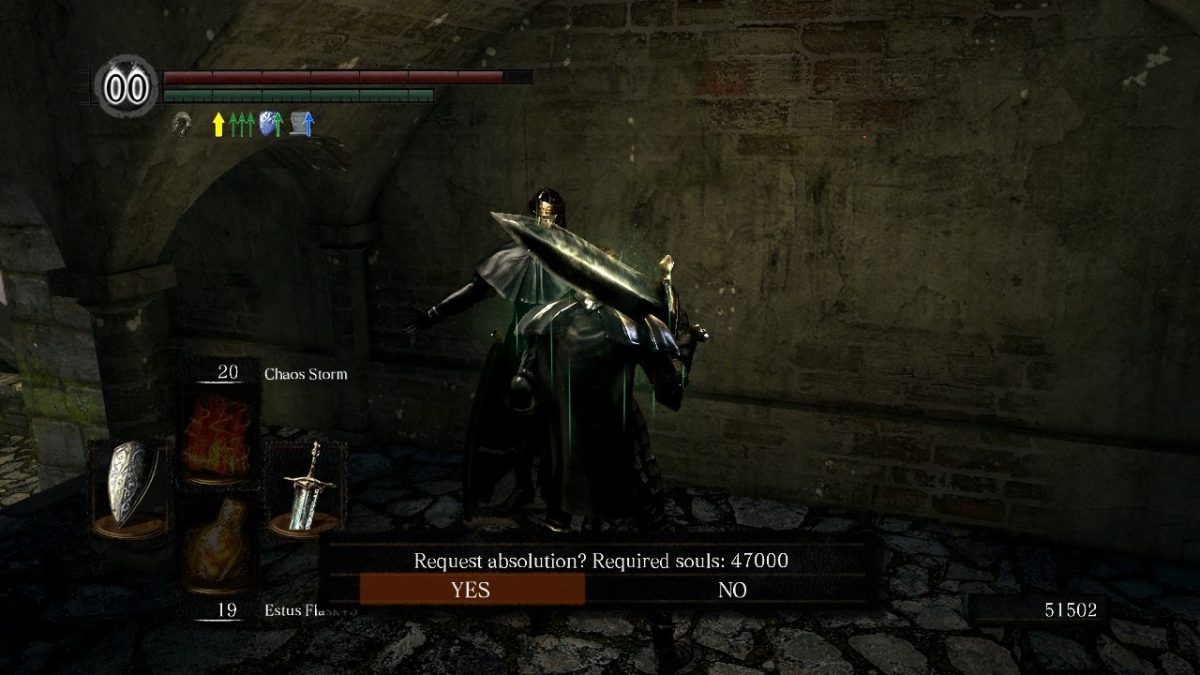
Though, considering the sheer carbon footprint Taylor Swift had in 2023 alone I’m not sure Oswald’s services are gonna be enough lol
That aside, once Oswald has been like “My child, but what if you slay?”, as long as the NPC who invited you to join the Covenant in the first place is still, y’know, alive, and able to invite you, bygones will be bygones. Your rank in the Covenant will be reset, though.
My personal favorite Covenant is, of course, the Gravelord Servant because that’s the one with my babygirl Nito in it!!!
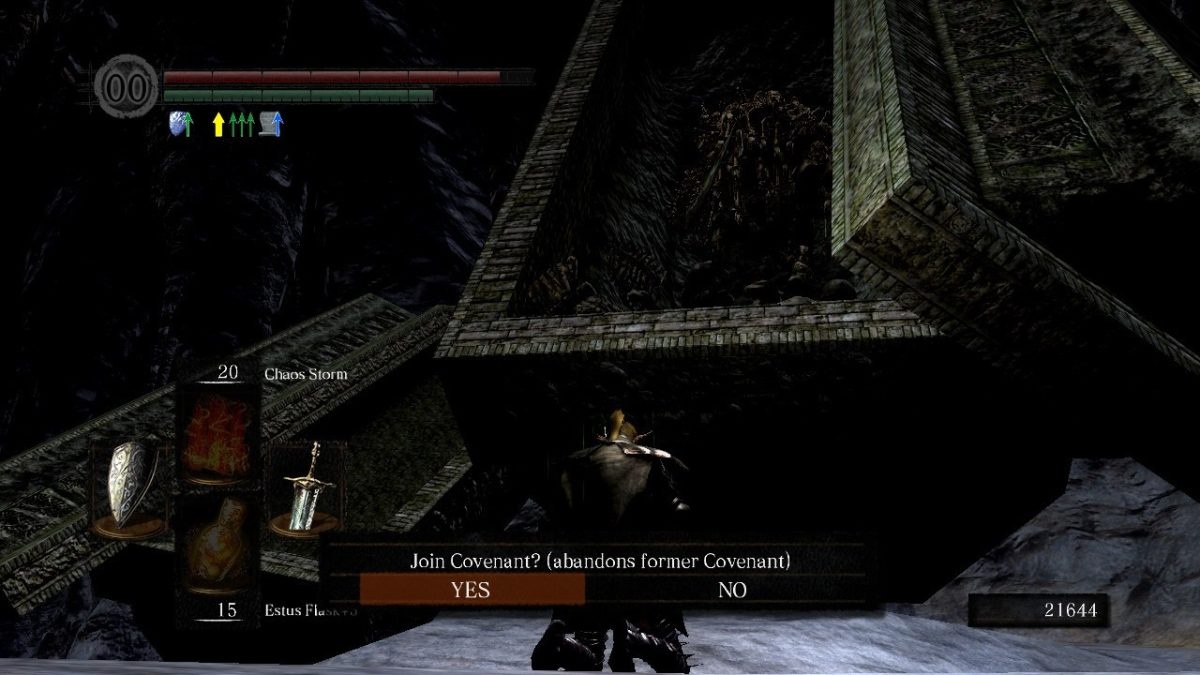
Look at him ain’t he cute when he sleeps (there is a correct answer)
The other one I really like is the Chaos Servant, both because I think the Fair Lady is a pretty sympathetic character, and because the spells her Covenant gives you are insane.
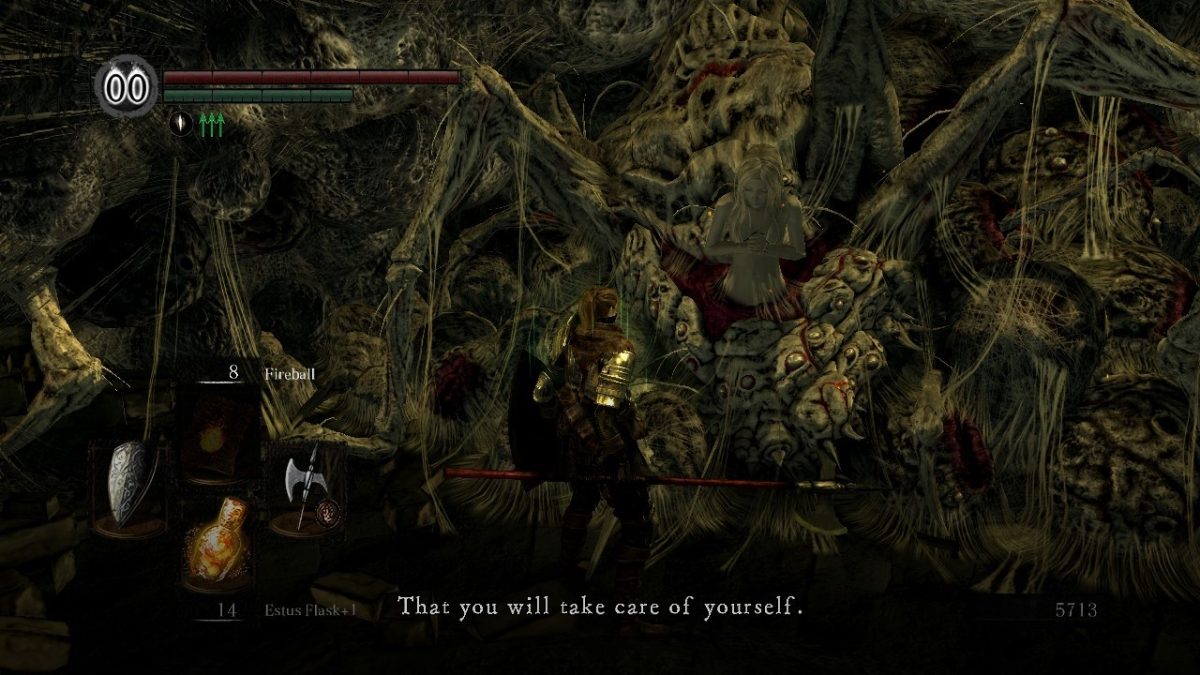
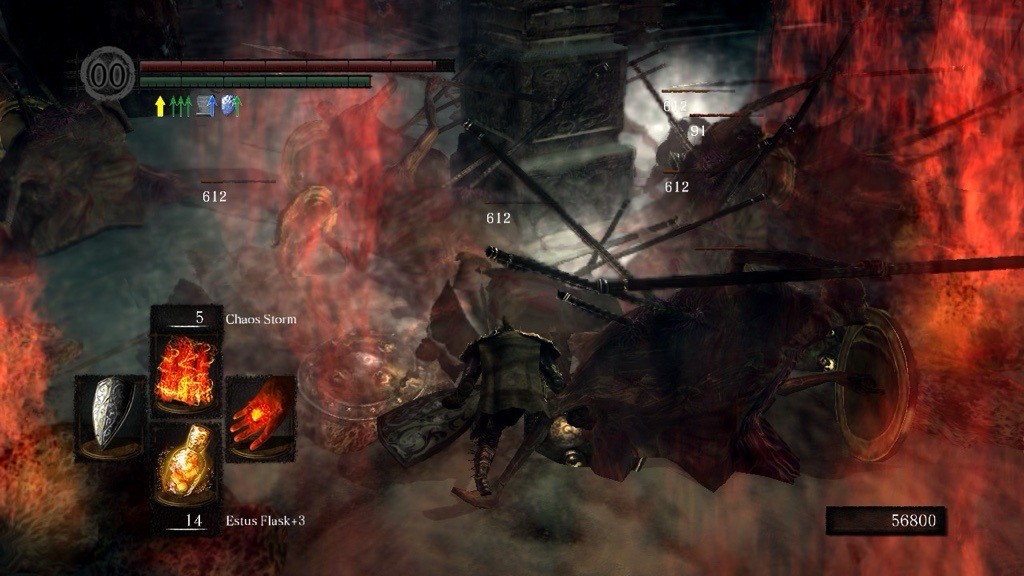
There is one other Big Thing the Chaos Servant Covenant allows you to do, but that’s a spoiler. Go play the game yourself if you want to find out.
But as I sorta nonchalantly dropped earlier, Dark Souls also has online play. When you open the game, you can select your launch setting: Offline Mode or Online Mode. Both are self-explanatory, and also self-explanatory is that you need to be in Online Mode to experience online features.
Online play comes in four main forms: Invading, being invaded, summoning other players to assist you against bosses, and being summoned yourself.
Invading is pretty simple. You pop either a Cracked Red Eye Orb or an uncracked Red Eye Orb, and you’ll barge into some unsuspecting player’s world. Your goal, once loaded in, is similarly simple: kill them. Upon slaying your target or being slain yourself, you’ll be sent back to your world with your reward.
Invading, like I said before, is mostly done to increase your position in a Covenant—hunting down heretics or suchlike. You won’t drop any souls if you die from invading, though, so you don’t have to worry about that.
Being invaded yourself puts you on the receiving end. Your adventure is interrupted, and you’ll have to fight for your life. Er, well, you do plenty of fighting for your life in Dark Souls, but y’know. You’re pitted out of the blue against another human person rather than an enemy with set AI, so it’s trickier by design.
Staving off an invader will award you with the same reward as if you’d eliminated your mark in an invasion.
If you really enjoy fighting other players, there’s more!
One, the Red Sign Soapstone.
There’re a couple of different colored soapy stones in Dark Souls, but this one leers you place a signature on the ground for other players to come across in their playthrough. This signature will let another player summon you for a one-on-one duel, this time with souls on the line. The stakes are higher, and it’s very fun.
Two, the Battle of Stoicism Gazebo.
Located in Oolacile, this place has leaderboards, streamlined queueing, and an array of different battle types for you to choose from. It’s your one-stop shop for everything pvp related in Dark Souls. I’m not sure how bustling community is these days, but I’m sure there’s someone out there.
But Dark Souls’ online capabilities aren’t strictly rooted in player-v-player bloodshed. Jolly cooperation is also on the table!
When approaching boss arenas, which you’ll come to recognize the telltale signs of, you might see glowing signatures on the ground. Unlike signs laid by the Red Sign Soapstone, activating these signatures will summon other players to help you in the coming boss battle.
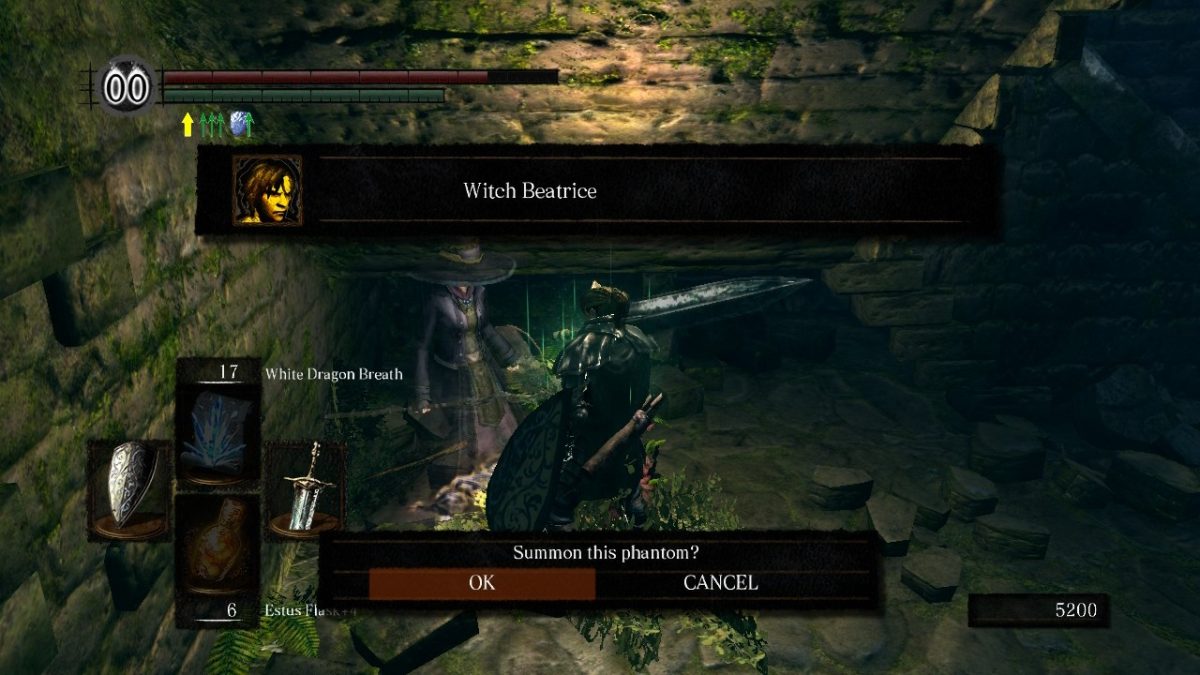
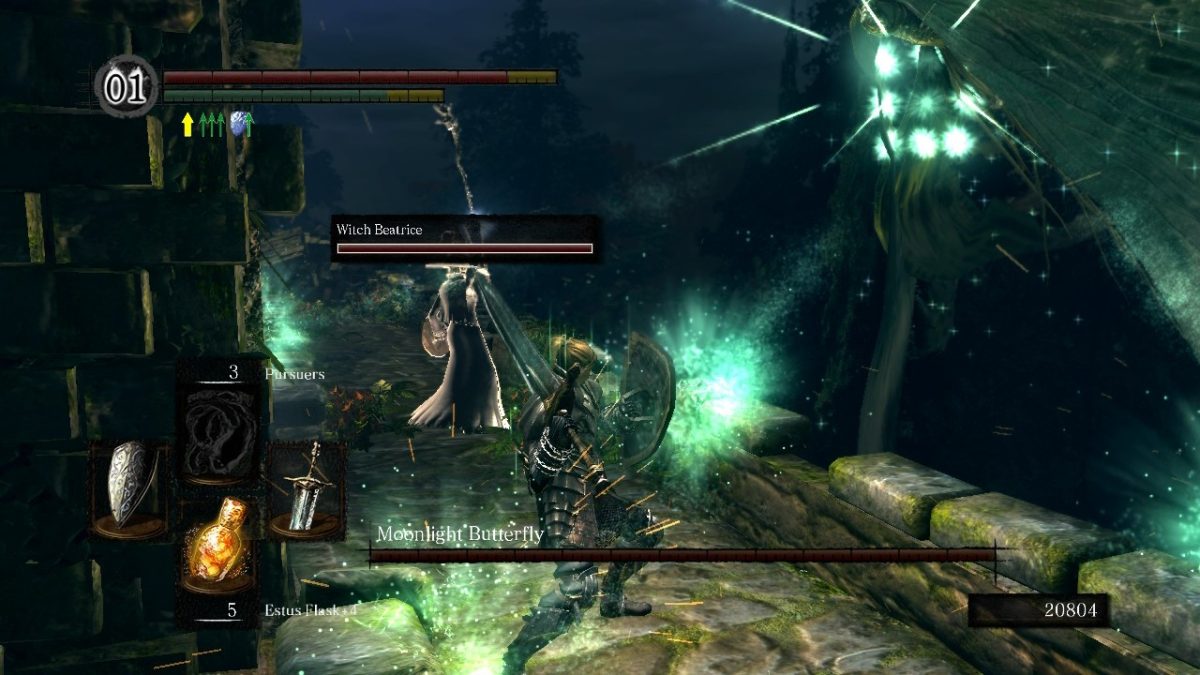
(this isn’t another player but it gives you the visual)
As a counterbalance, the boss’ health will increase quite a bit, so it’s not an instant easy mode switch or anything.
Also, your summoned allies can be killed during combat. Crucially, them dying will not reduce the boss’ HP back to what it would’ve been had you not enlisted their help, leaving you to face a boss with a greatly engorged healthbar alone.
If you want to put yourself out there for a collab, you need the White Sign Soapstone. With it, scribble onto the ground near a boss door, and sooner or later, you’ll be ringed to assist. The reward for doing so, on top of just plainly doing a good deed, is the same as for the last two things.
And it’s about time that I actually tell you what that reward is.
It’s 1 Humanity point.
Humanity is a secondary currency on top of souls that’s also dropped on death. You can see how much Humanity you’re carrying in the upper-right corner of the screen, alongside your HP and Stamina. It’s in that circle with the numbers in it; the numbers being how much Humanity your character has imbibed in them.
Humanity is acquired in a couple different ways and is used for a couple of different things, but the main purpose is to return your character to human form.
To do so, at a bonfire, head down to the “Reverse Hollowing” tab. Selecting it will prompt you to spend 1 (one) Humanity. If you choose yes, your character will magically become rehydrated and un-Undeaded, giving you access to some important features.
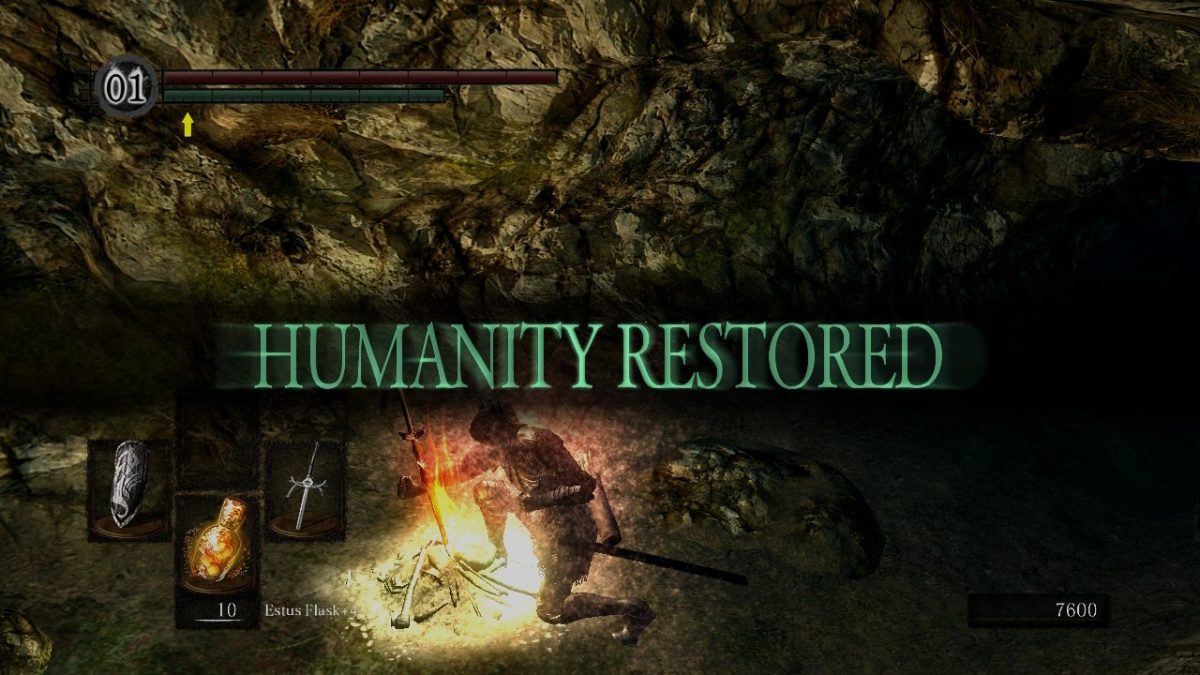
Like, for a random insignificant example, ALL THAT ONLINE STUFF I JUST DESCRIBED. Yeah! All that invasion/being invaded, soapstone and signature stuff is inaccessible if your character isn’t in human form. It makes sense that Dark Souls refunds your Humanity as a reward.
Engaging with that side of the game alone would be a good reason to go human mode, but human form and Humanity do one other really important thing, unrelated to online play—they let you increase your base Estus Flask uses through Kindling.
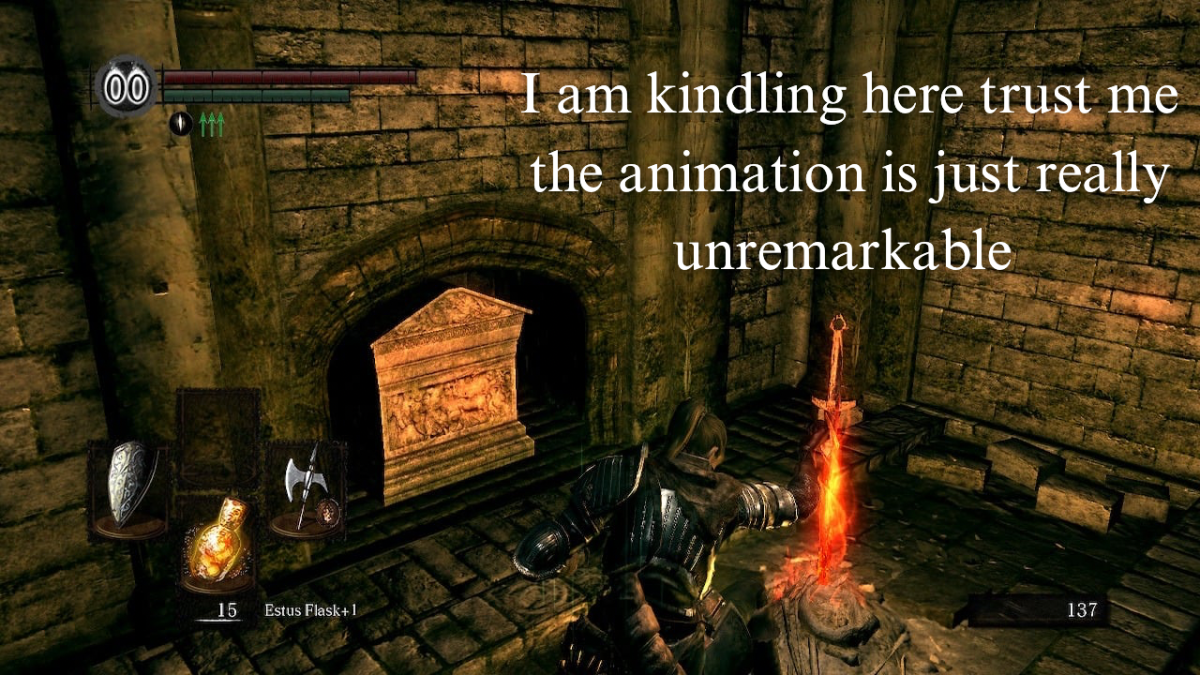
By giving the small blaze 1 point of Humanity, the flame will grow a bit stronger. This translates to 5 more Estus count, and you can do this up to three times. Though, it doesn’t work like, add X Estus to whatever you have left. No, kindling sets a baseline that your count will be rounded up to, assuming you’re below the set bar.
If I, Taylor Swift, have 8 Estus uses and rest at a bonfire that was Kindled once (baseline is 10), my Estuses would be raised to 10. If you have more Estuses than the Kindling baseline, you’ll stay at that count. It won’t be rounded down.
More Estus charges lets you screw up more without completely losing an important fight, so Kindling is a deeply appreciated mechanic.
Any kindling is locked to the bonfire you do it at, though, and not shared across all of them, so you’ll have to repeat this process regularly throughout the game.
But, again, you need Humanity to go human mode and more Humanity to Kindle. Online engagement rewards aside, how do you get more Humanity?
Well, defeating bosses and killing important NPCs gives you 1 Humanity each, but neither of those are sustainable long-term. There are a limited number of bosses and NPCs both, and none of them respawn. Most NPCs also provide services that, obviously, aren’t available if you kill them.
There’s also the Dark Hand, a unique fist weapon, which allows you to siphon Humanity out of human enemies or other players. It starts out at one Humanity per suck, but that sucking power can be increased by investing into the Darkwraith Covenant. That is a niche case, though.
No, the best and most common way to get Humanity is through using specific consumable items. These items—also named “Humanity” for extra confusion, I guess—can be found on corpses, bought from merchants, or dropped by enemies. Selecting them in your inventory will let you crush it and absorb it, adding 1 or 2 Humanity points to your dark soul.
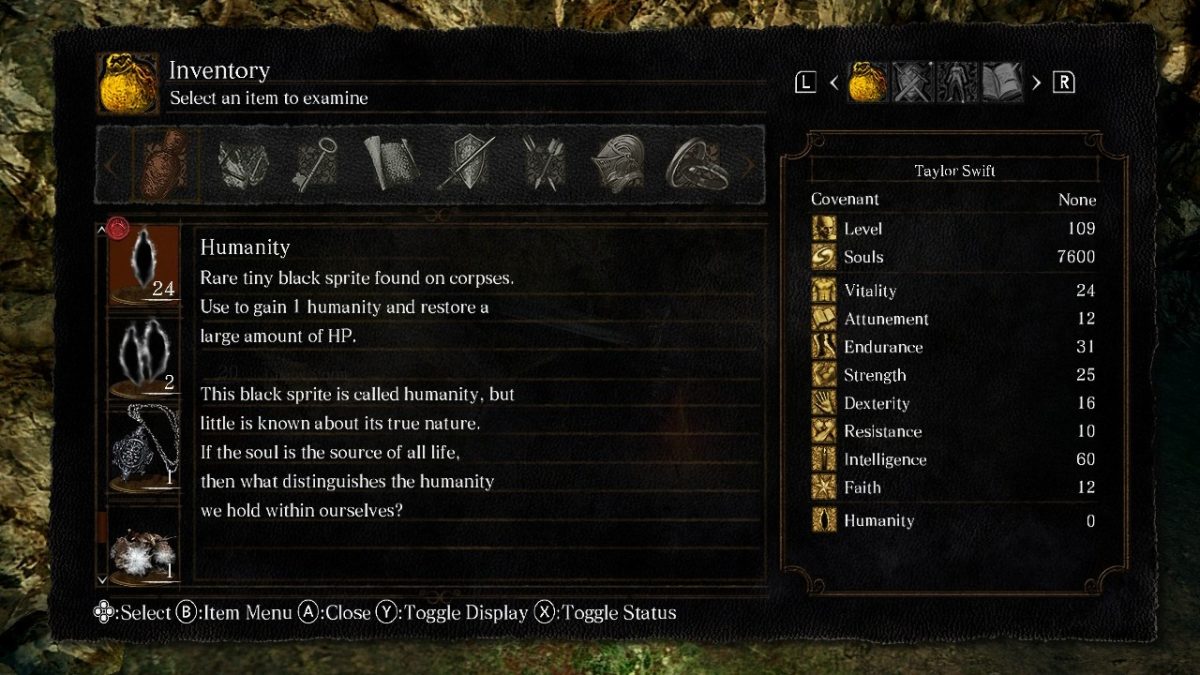
I love how ominous this item description is too “If this soul is the source of all life, then what distinguishes the humanity we hold within ourselves?” I love it. No notes. Not a one.
Back on track, while enemies that drop the Humanity item are rare, corpses and merchants possessing them are way more common. Relatively speaking, anyway.
I also specifically want to highlight that rats, for whatever reason, are some of the enemies that drop consumable Humanity items. No, I don’t know why.

Well, rats are pretty cool, so I understand the appeal of having them drop something useful.
But what if you’re not able to do the online things? Like, you’re playing on Nintendo Switch and don’t want to pay for Nintendo Switch Online? Or, what if you’re just plain not interested in invading or being invaded and all that jazz and decide to play in offline mode? Does human form, and Humanity by extension, provide any benefits in single-player, or is it just kindling?
Yes!
While you can’t summon other players if you’re offline mode, you can still summon in-game NPCs like Solaire or Maneater Mildred for certain fights. You’re not deprived of assistance just because you’re not online.
Furthermore, there are some scripted invasions against red phantoms, like Dark spirit Knight Kirk or Xanthous King Jeremiah. Defeating these guys lands you special loot, like a stupidly big meatcleaver, alongside a Humanity point and some souls for the trouble.
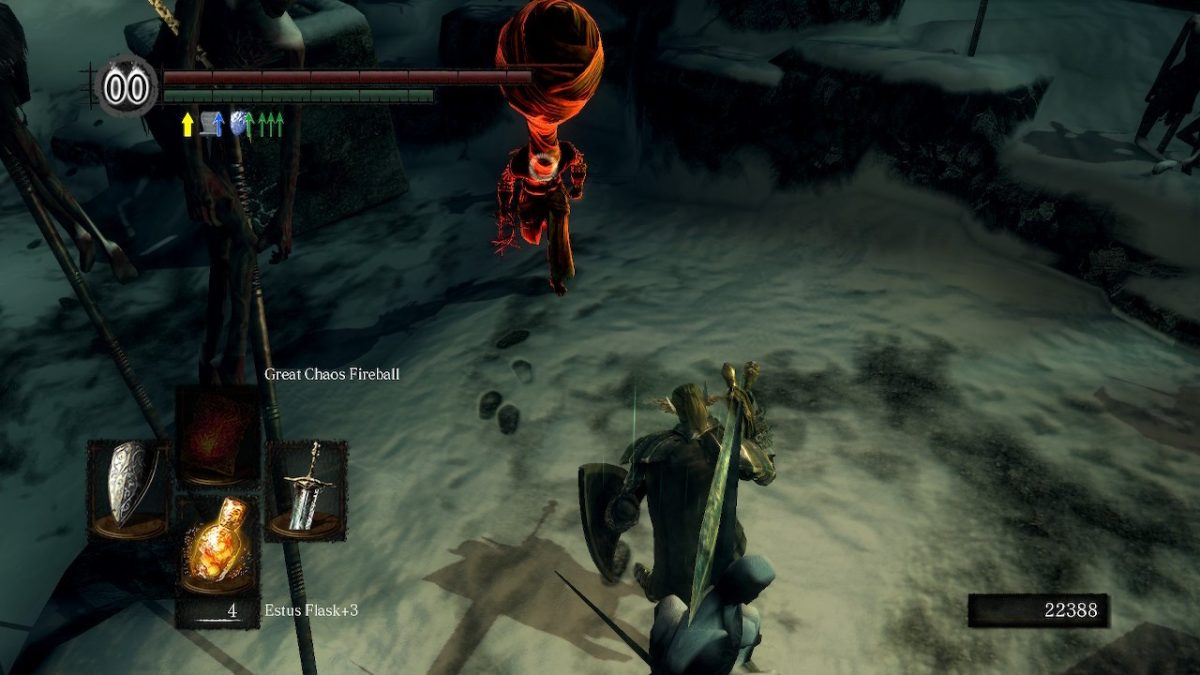
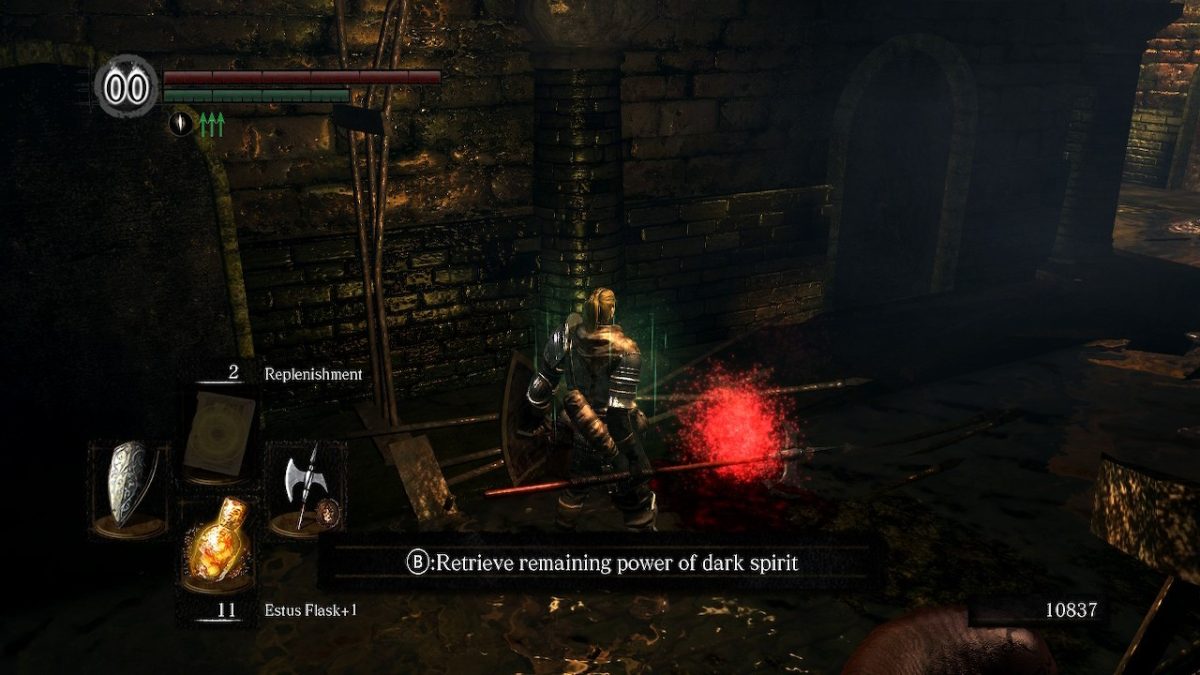
Also, some things, like Chaos weapons and your resistance to Curse (a real headache of a status effect), are affected by how much Humanity you have on you.
Human form doesn’t last forever, though. If you die, your character will return to being Undead. While you can reclaim your lost souls and your Humanity points, you have to go re-un-Hollow at a bonfire.
Human form provides a lot of nice benefits, but the value of it really hinges on what you want to get out of Dark Souls.
For people who want to dabble in online, human form enhances what was already there. Being jumped by an invader when you thought you were safe certainly adds to the experience, and there’s a lot here for fans of murder and competition with the Gazebo.
But if you want Dark Souls the first to be a purely single-player adventure, you’ll mostly just be going human form to kindle bonfires and to summon NPCs for applicable boss fights. Not all boss fights even have summonable NPCs available, and every one of them can be absolutely beaten by you alone. It’s totally viable to just stick to being Undead the whole time.
In fact, the Chaos Servant Covenant (the other one that I really liked) uses Humanity points as its devotion currency, so there is a place to dump any Humanity burning a hole in your pocket!
As you’ve seen and as I’ve mentioned, here are other people you encounter in your journey through Lordran. Merchants and blacksmith who wring you dry with their wares and assist you with their skilled labor; powerful beings who entice you into their service to their own ends; a few stationary people who provide background details about the world.
But there’s one subsection of NPCs I’ve not mentioned that happens to be the most fondly remembered and iconic in the game: quest NPCs.
These folks will appear multiple times a playthrough, in different places, saying and doing different things each time. Some of these travelers sell items, but most of them don’t.
Chatting them up, completing a little request for them (make sure to talk to them a second time after doing it to confirm it), or simply progressing the game more will have them move to their next spot. Depending on external factors and seemingly innocuous actions you take, the ending of the questline can change dramatically.
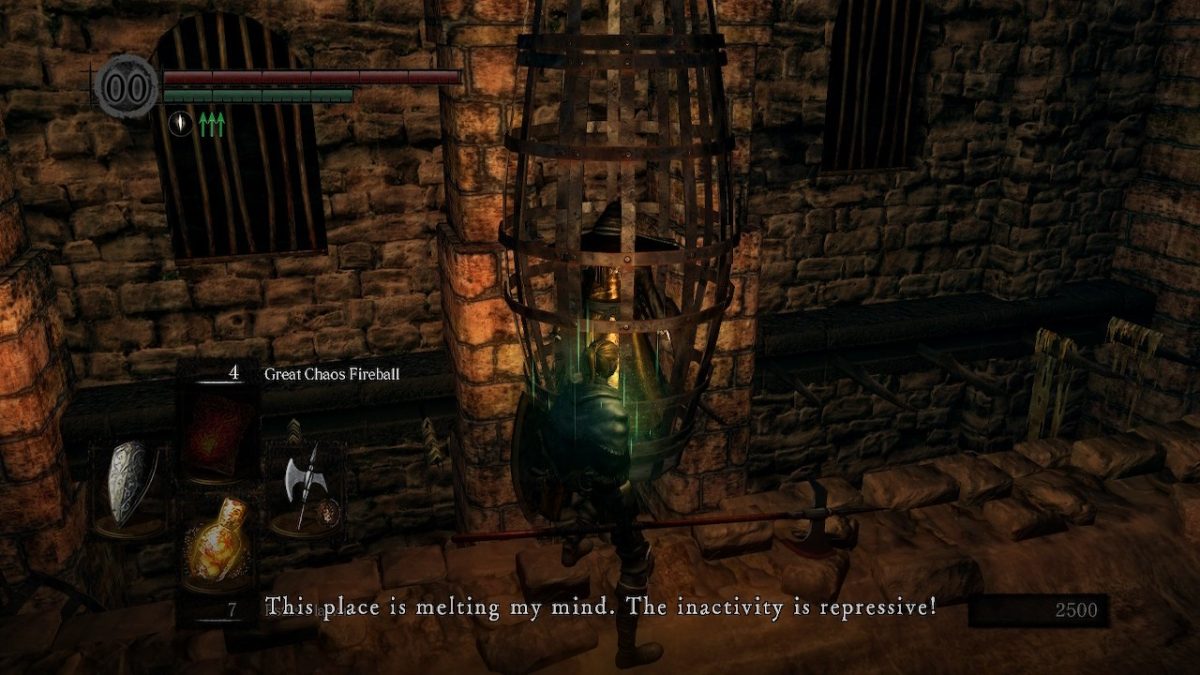
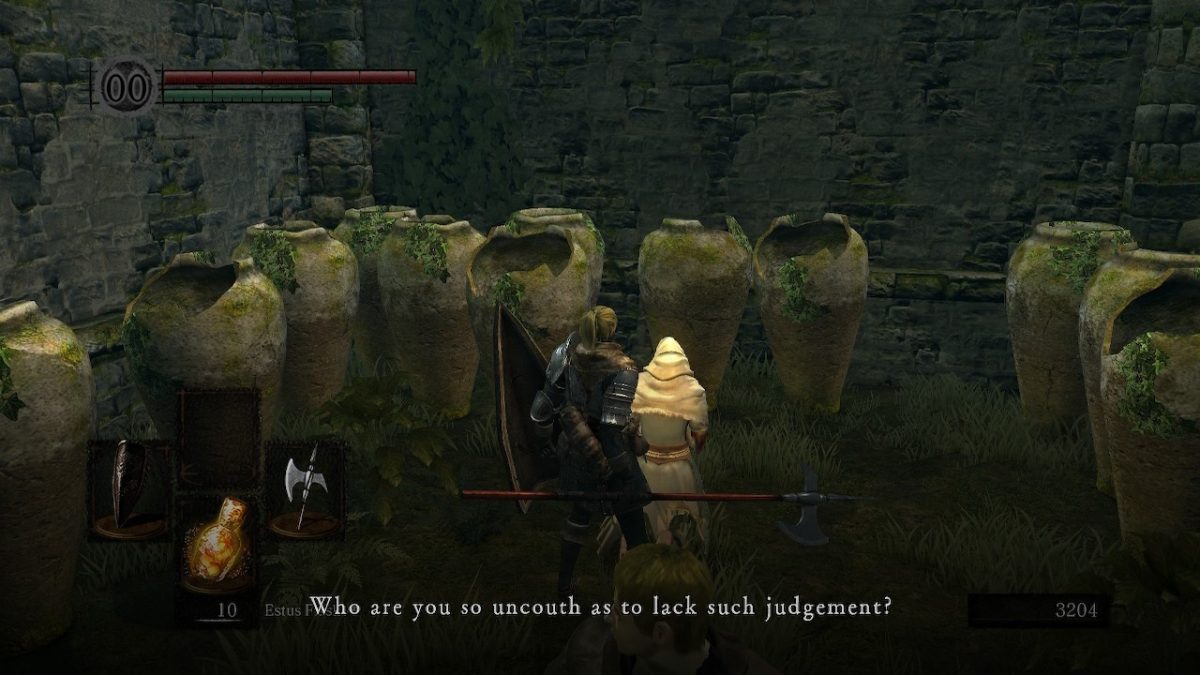
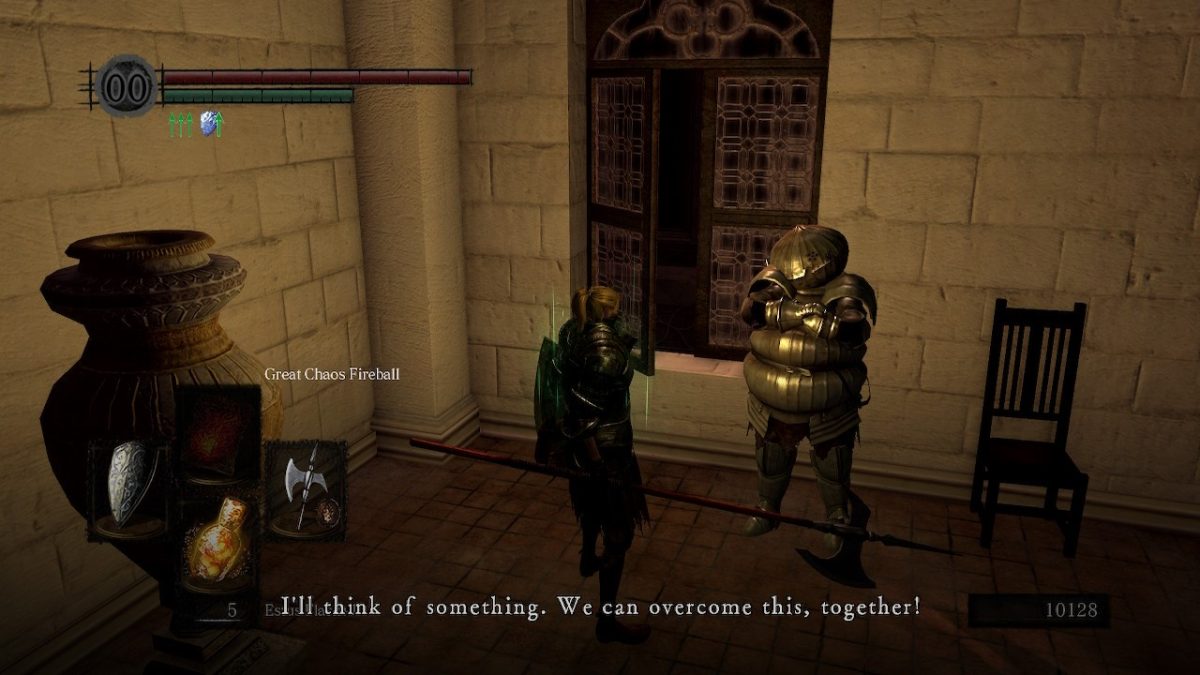
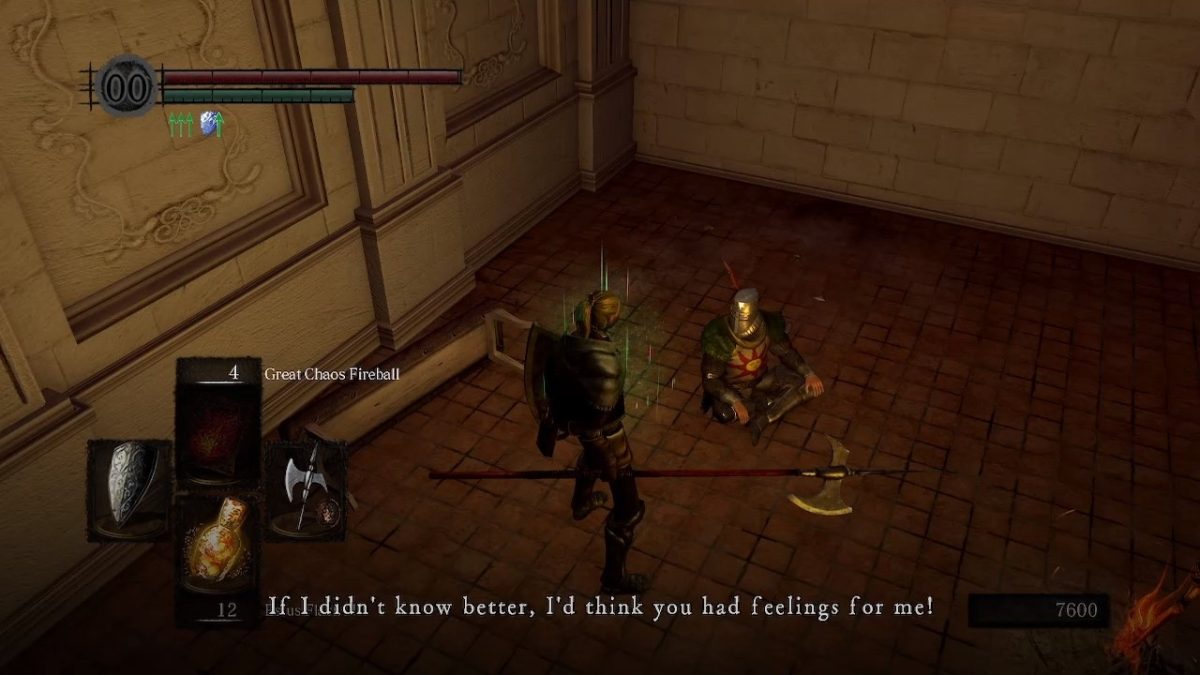
(He’s referring to Travis Kelce, btw)
Through these repeat encounters, you gradually build up a camaraderie with them. They might be a little condescending or off-putting at times, but seeing a familiar, friendly face makes the increasingly bleak, oppressive atmosphere . . . just a bit less so.
Except for Patches, screw that guy. Like, he kicked Taylor Swift INTO A DEATH PIT how haven’t the Swifites not put his head on a spike yet? C’mon y’all get on that
These characters’ questlines are not all created equal when it comes to length and girth, though. Some, like that of this pyromancer guy Laurentius, have few steps and fewer outcomes. On the other hand, there’s Solaire, that guy sitting crisscross applesauce and talking about Travis Kelce from a second ago. His quest starts really early—before you even ring the first bell—but it stretches well into the endgame!
And that also extends to the rewards you gain upon completion of the quest. Some are insane, like 7 Humanity consumables or the magical nuke stick Tin Crystallization Catalyst, but others not so much. Like, I’m this far into the game and you’re giving me the Tiny Being’s Ring? Is there not anything better you can give me Siegmeyer of Catarina????
Regardless of those gripes, it’s still comforting to know that you’re not alone in this world. They might not always be around to reassure you, but the knowledge that you might cross paths with them again is encouraging!
However . . . that doesn’t tend to last. Death awaits behind every corner in Lordran, and once it’s happened to one character, you get a sinking feeling that none of your blorbos are safe. The immediate feeling you get from seeing them again changes from one of simple, warm happiness to one of intense relief, cast in a looming shadow of dread and fear.
10/10 would recommend
But Dark Souls as a game . . . can be rough at times. Sometimes it feels like you’re just smashing your head against the wall and making no progress. Like Ornstein and Smough. I struggled with them a lot—it feels like, no matter how well you’re doing, they always find a way to catch you off-guard and kill you. You dodge at the wrong time? DEAD! You’re one second too slow to retreat? DEAD! You just TRIED TO HEAL?
And you’re dead.
Again.
It’s frustrating, and it’s demoralizing. And it gets to a point, where you’ve thrown yourself at a boss over and over and over and over again, and you’re still losing. It’s not getting easier. You’re not really having fun anymore, so why are you still playing? Sure, there’s gamer clout on the line and it’s certainly a blow to the ego to admit that this video game bested you, but . . . why not give up?
Dark Souls argues this very thing to you. It’s mean, and it is cruel, and it is degrading. Hell, whenever you die, the game makes it a point to mock you with big, bold red letters that scream “YOU DIED.”
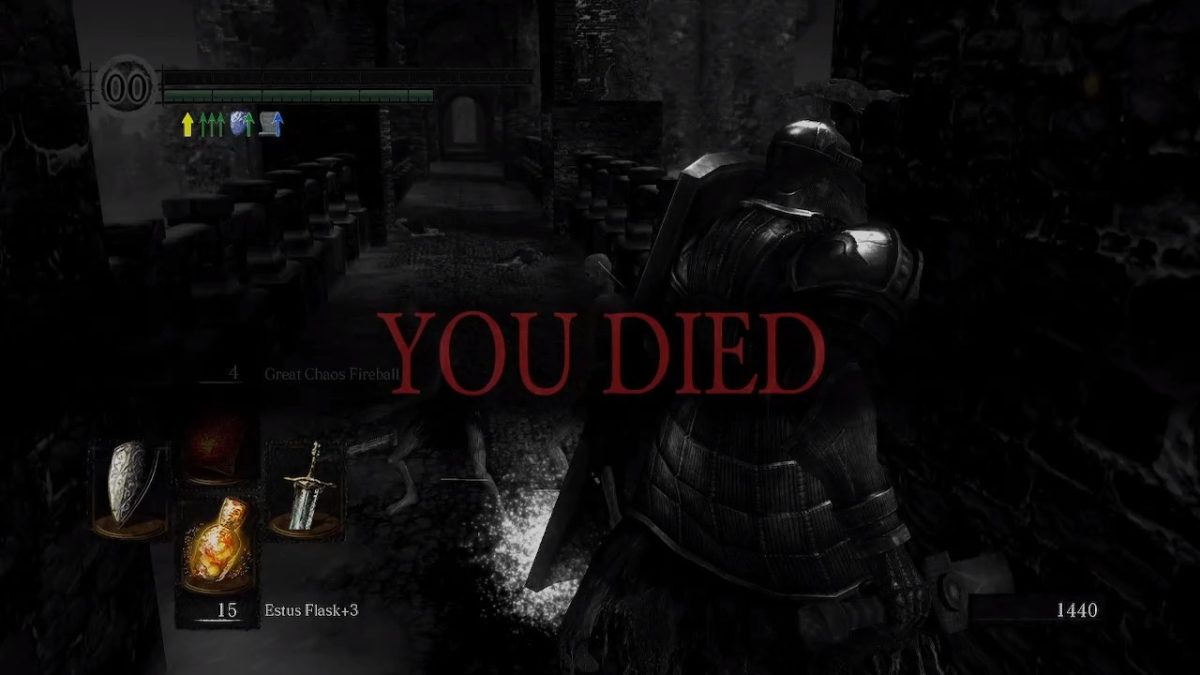
It pushes you away at every turn, but there’s something about it that raises an eyebrow or two.
After all, if Dark Souls truly did just want to make you suffer, why would you be able to upgrade your weapons? Why would it give you the ability to dodge and guard, let you reclaim your souls? Why would it supply you with any healing at all if its only goal was to punish you for daring to try?
Because it wants you to succeed.
It might NOT feel that way in the moment, and Dark Souls certainly isn’t going to give up easily, but . . . video games are meant to be fulfilling, right? That’s the whole point of playing a game—you feel accomplished. That’s what sets video games apart from really every other medium: you did it.
You were the one to save Princess Peach from Bowser’s clutches.
You were the one who stopped Sephiroth.
You were the one to put in the time and the effort to learn that tricky boss’ moves, to figure out exactly when to dodge or parry, and . . . you did it!
You defeated that boss.
And in the same way as it mocked you for dying so embarrassingly, Dark Souls applauds your success with a shining, golden message:
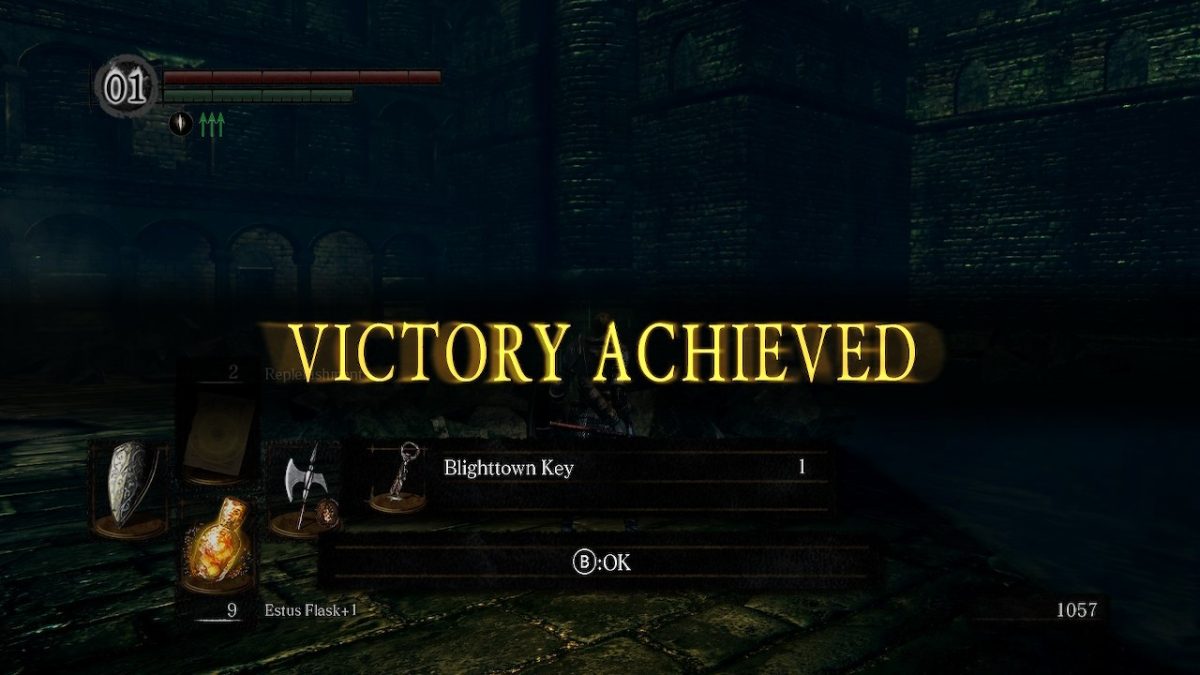
And in Dark Souls, if you die, if you lose. . . you can try again. You drop your souls and Humanity and all that, yeah, but still—you can take another shot. With new knowledge. Every time you lose, your brain is fed more data about how the enemy works, what their strategies are and how you can exploit them.
You’re a bit better at the game than you were last time.
Sure, you might still fail again. In fact, odds are, you probably will fail. You might still misjudge the time to dodge-roll, use up all our Estus Flasks too early, or what-have-you, and Ornstein and Smough end up making a Taylor Swift kebab.
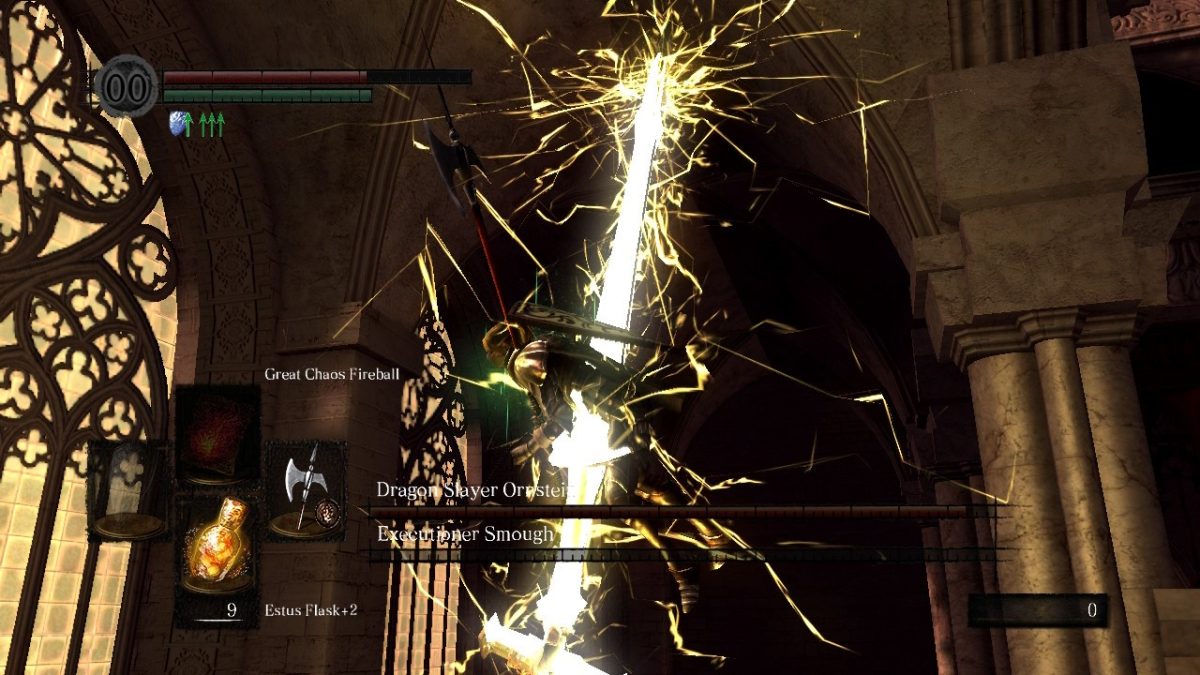
But nothing is stopping you from trying again.
You can try again, and again and again and again and again . . . Because maybe this time you’ll succeed. Maybe this will be the winning attempt, where you come back stronger than a 90s trend and show Ornstein and Smough who’s boss.
But maybe that winning attempt never comes. Maybe you just keep messing up, messing up and losing. Maybe all of that experience I peddled to you was just unearned shmaltz and that you should just take the hint and give up.
Maybe. Maybe that’s true.
But there are always options. You may not be able to change your stats, but stats aren’t everything. You can completely change your weapon or spells; you can swap around armor to be lighter and get more invincibility frames from your dodge-roll, or go all in on being an impenetrable brick wall; you could head over to your nearest blacksmith and do something there; you can try new strategies.
You don’t know for certain if you can’t win if you don’t try again, whatever that again looks like.
Because you can always, always try again.
For as completely hopeless and as impossible it can seem at times, you can overcome Dark Souls. You just have to keep at it. Dark Souls might not believe you can win, but it certainly wants you to.
It’s this attitude, I think, that made the original Dark Souls so iconic. Yes, I’m finally answering the title question you’ve waited long enough.
For context, in the early 2010s, video games were becoming way more casual-oriented on the whole. This was because of a little machine you’ve probably heard of: The Nintendo Wii.
In 2006, Nintendo released this thing into the wild, and alongside their already-released DS, the results were immediate.
Hundreds of thousands of people who were otherwise completely uninterested in gaming were captivated by the Wii’s and DS’ less-intensive games, skyrocketing both of them to mass financial success. Other companies, like Microsoft, followed suit, shifting focus away from more hardcore games to try and appeal to casual gamers, and thus the age of casual gaming was born.
While the Nintendo Wii and DS were pretty firmly in the past (games were still releasing for them, but the hype had died down) by the time Dark Souls was on the horizon, their impact certainly was not. Mobile games like Angry Birds and Cut the Rope were massively successful, and casual gaming wasn’t going away any time soon.
So, when Dark Souls launched, uncompromisingly callous and challenging but not impossible, the underfed hardcore gamers of the world flocked to it. They relished the difficulty, and Dark Souls quickly became a well-known game, capturing a kind of wildfire attention that its predecessor simply didn’t.
And with attention came normalization. There was now a game that proved that there was still a market for these harder games, and more games released that challenged their players. Shovel Knight immediately jumps to mind.
By this turn of events, many game developers sought to emulate Dark Souls’ gameplay more than just generally turning up the difficulty.
Implementing Stamina bars; emphasizing learning your opponent as a key part of winning fights; dodging and guarding; losing all of your currency on death; having limited healing; even having NPCs with questlines who make you sad when they die at the end became more common!
This sheer cultural influence, enabled by Dark Souls‘ refusal to coddle the player, instead demanding they get better at the game and encouraging them to use its systems to give themselves an edge, is why Dark Souls is so iconic. Why Miyazaki and Fromsoft would go on to create so many sequels, and why a whole genre of games follows in its armored footsteps.
. . . Now, for all the acclaim and influence it had, is Dark Souls a perfect game?
ABSOLUTELY NOT. GOOD GOD NO.
The back half of the game post-Anor Londo is aggressively rushed-feeling. One of the areas is just pitch-black and that’s it. And the bosses kinda all suck to varying degrees. They just aren’t interesting. They’re challenging in the sense that they do a lot of damage, but they lack the tense fun factor that earlier bosses have in spades. Sure, the DLC bosses are phenomenal, and the final boss is a great return to form, but the base game’s mid-endgame is kinda just mush. And the mid-endgame is half of the game; it’s not one small blemish that can be easily glossed over.
It’s not something that you only realize under scrutiny: it’s so a glaring problem that even I, the idiot who didn’t see that the fire halberd’s damage was less than the original halberd, picked up on it. That’s how you know it’s noticeable.
The decline is so sharp you could impale someone on it.
Just like a fire halberd.
For all of its flaws, Dark Souls is, undeniably, a very important game. If Dark Souls hadn’t released when it did and attracted the fanbase that it did (for better or worse), I think today’s gaming landscape would be quite a bit different. It’d be a lot less difficult on the whole, that’s for certain.
And if people just don’t like it, that’s valid! Be it because of the daunting and frustratingly vague gameplay, or the obnoxious git gut, You-Wouldn’t-Last-An-Hour-In-The-Asylum-Where-They-Raised-Me superiority complex part of the fandom has, or for whatever reason, not enjoying Dark Souls is valid!
That being said, I do think every epic gamer should play through Dark Souls at least once in their lifetime, because it is such a landmark development in the growing history and continuous evolution of gaming as a medium.
For one last time, Go Bengals!
Happy trails, y’all. Keep the silverfish entertained for me.
(P.S. I’m not actually a Swiftie. YES, you’ve been DUPED AND YOU CAN’T STOP ME NOW I’M GRADUATED I HAVE NO RESTRAINTS! WOE BE UPON YE)







